Your Kid Stress Less (& FIND MORE FREE TIME!) Set Your Neurodiverse Child Up for Success

99 Fun Field Trips, Picking a Preschool & College Prep Tips
A LOOK INSIDE
SCHOOLS

Your Kid Stress Less (& FIND MORE FREE TIME!) Set Your Neurodiverse Child Up for Success

99 Fun Field Trips, Picking a Preschool & College Prep Tips
A LOOK INSIDE
SCHOOLS

Music is a universal language of patterns, fractions and sequences. And children love it! That’s why at Primrose Schools® we use original songs — and dance parties — to lay the foundation for future math concepts as we make the most of your child’s first five years.
Learn more about the 14 Primrose schools in New Jersey.















MY SON SMILES FOR A PHOTO OUTSIDE ROSS-ADE STADIUM ON THE PURDUE CAMPUS DURING HIS FIRST VISIT TO WEST LAFAYETTE, INDIANA.

September has always inspired a reset in my house—the start of a new academic year and the new routines that come with it. This year, that fresh start feels bigger than ever. A few weeks ago, we hugged our firstborn goodbye at college, excited for what's to come as we learn to embrace our new normal at home with our 10th grader. Change is exciting, but it can also bring with it new stress. Our kids deal with more pressure than ever. The pressure to achieve—whether it’s in academics, sports or other extracurriculars—and to fit in can take a toll on kids’ mental health. In this issue, we share advice to help your kids build healthy habits for managing school stress. One of the best ways to do that? Don’t overschedule them. Our story on page 57 illustrates why downtime is a much-needed gift these days.
If your neurodiverse child is starting at a new school, we’ve got tips to help make that transition smoother for everyone. And whether you’re looking for a preschool, daycare, or private school, our stories will help guide your search for the right fit. In our Meet the School special section on page 27, you'll get a close-up look at the best independent schools in New Jersey and beyond.
As we begin the school year, I’m reflecting on my son’s high school journey and what’s to come for my daughter. Along the way, I’ve learned a lot about making sure my kids do what they love rather than invest in things just for the sake of a resume. In this issue, we asked college counselors what else high schoolers can do to stand out authentically in the application process. Get their advice on page 74, and head to njfamily.com/collegelife to read our former intern’s tips for incoming freshmen.
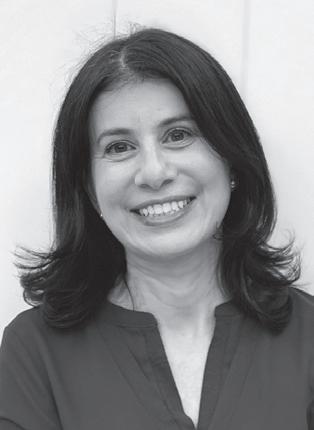
FOLLOW US!
No matter what year your child is starting, here’s hoping your family will savor the new beginning and find your rhythm—together.


Facebook /NewJerseyFamily
X @njfamilymag
Instagram @newjerseyfamily
Threads @newjerseyfamily
Pinterest /NewJerseyFamily

Volume 9, Issue 1 • 2025
Editorial Director
Dina El Nabli editor@njfamily.com
Art Director
Leeza Hernandez
Managing Editor
Jennifer Amato
Contributors
Jennifer Kantor, Ronnie Koenig
Jennifer Lesser, Nayda Rondon Arricca Elin SanSone
Production Designer
Rosa M. Joseph Business/Project Manager
Erica Barton
Director of Advertising Marcy Holeton
Advertising
Ann Cusack, Cathy Grote
Debbie Lubranski, Pamela Peterson
Erin Salman, Andrea Thorne
Co-Publishers
Dina El Nabli / Marcy Holeton
Founding Publisher
Cindy Mironovich
The acceptance of advertising by New Jersey Family does not constitute an endorsement of the products, services, or information being advertised. We do not knowingly present any products or services that are fraudulent or misleading in nature. Editorial inquiries and advertising rates may be addressed to Kids Monthly Publications, Inc., P.O. Box 669, New Providence, NJ 07974. New Jersey Family can be reached by sending an email to editor@njfamily.com, or by visiting njfamily.com.

Reproduction of New Jersey Family or Big Book of Education in whole or in part without written permission from the publisher is prohibited. All rights reserved. Copyright 2025 by Kids Monthly Publications, Inc.






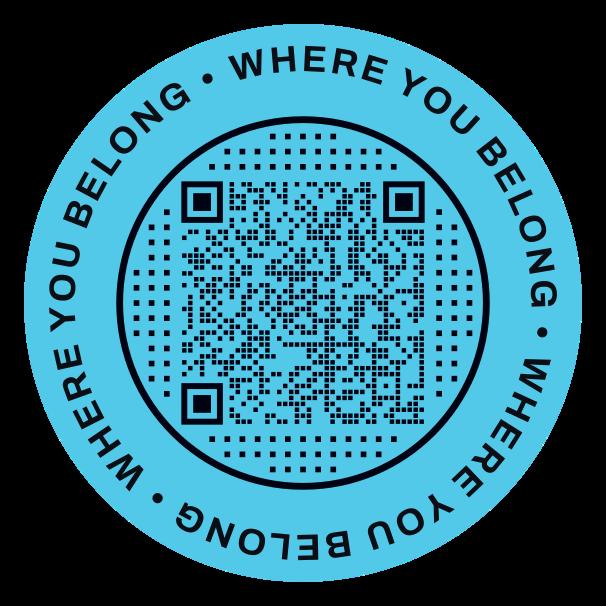





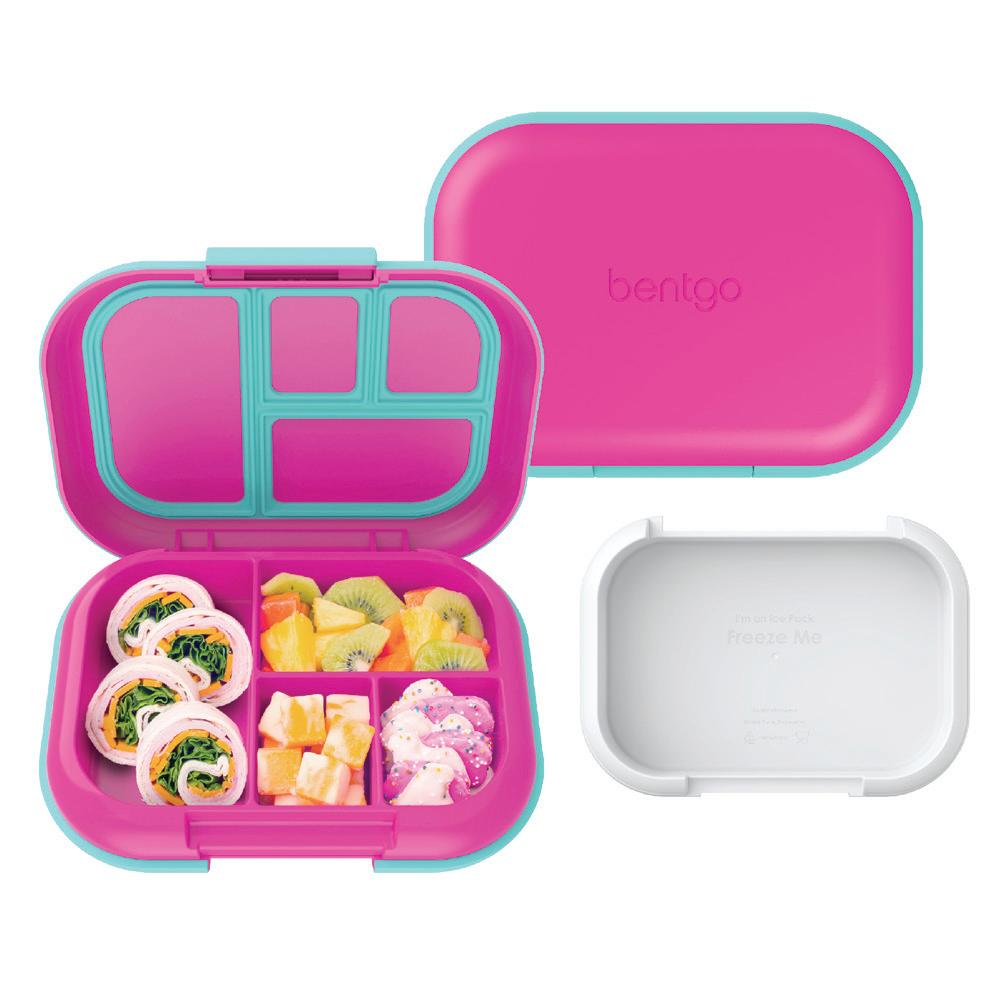
Practical and cute finds for the new school year





1. COOL CARRIER Insulated and eco-friendly, this roomy lunch bag holds snacks, a water bottle, and a durable stainless steel PlanetBox lunchbox (sold separately). Choose from 10 colors and prints. Adventurer Insulated Lunch Bag, PlanetBox. $32.95, planetbox.com 2. SIP SMARTER A favorite among kids, this insulated water bottle keeps drinks cold for up to 24 hours and has a lid that locks for leak-free carrying. Drink through the built-in straw or wide mouth. FreeSip Stainless Steel Bottle in Peachy Keen, 24 ounces, Owala. $29.99, owalalife.com 3. CARRY ON This recycled-material backpack has padded grab handles, dual bottle pockets, sturdy straps, an organizer pocket, and a side-access padded laptop sleeve. Station Pack, Jansport. $65, jansport.com
4. CHILL OUT Lunch stays cool in this leakproof bento box, thanks to a removable ice pack under its compartments, rubberized edges and an easy-open latch. Chill Kids Lunch Box, Bentgo. $32.99, bentgo.com 5. WRITE ON Retractable gel pens with quick-drying ink are ideal for taking notes. Made from recycled materials, they also clip easily onto notebooks or pockets. Zento Gel Pens (4-pack), Uni-Ball. $6.89, amazon.com 6. PAWSOME PACK This catcentric water-resistant pack is purr-fectly roomy for books and snacks, and has a padded laptop sleeve, too. Cat Social Minimalist Backpack, 4Legz. $49.95, 4legz.com 1 3 4 6 5 2


Peter






After a summer of relaxed bedtimes and sleeping in, it’s time to get kids of all ages back on track for the new school year. While no one functions well on lack of sleep, it’s not just about cranky kids: A recent study from the University of Georgia says that inadequate sleep may impact your child’s brain development.
The study found that kids who don’t get enough sleep had less connectivity in the parts of the brain that affect decision-making and processing information. In the study, more than 2,800 adolescents wore sleep trackers, then were followed up on in two subsequent years for problem behaviors. Researchers also compared the children’s MRIs, which showed patterns in connectivity between brain regions.
Kids with less brain connectivity were more likely to show signs of behavioral issues, such as impulsivity and aggressiveness. Researchers found that sleep duration and efficiency may predict problem behaviors down the road. To make sure your kids gets what they need, including healthy brain development, try these sleep tips:
KNOW HOW MUCH SLEEP THEY NEED. It’s probably more than you think. Toddlers do best with 11 to 14 hours per day, including naps, while preschoolers need 10 to 13 hours, including naps. School-aged children do well with 9 to 12 hours, while teens require
BY ARRICCA ELIN SANSONE
8 to 10 hours. That means, count backwards from the required wake-up time to figure out what time bedtime should be for your child’s age.
START EARLY. Don’t wait until the first day of school to reinstate good habits. Gradually inch up the time for a week or two ahead of the first day so it’s less painful (for everyone!) when school kicks off.
REMOVE DEVICES FROM BEDROOMS. You can’t be sure your kid isn’t up texting at 1 am unless you park all the phones, including yours, in a central location at night. Also, aim to shut down screens at least an hour before bedtime.
MAKE BEDROOMS A SAFE HAVEN FOR SLEEP. Cool down the room, draw the drapes so light doesn’t leak in, and run a white noise machine if that helps camouflage household or street noise. A bedtime routine that’s the same night after night, such as a bath then a book, also helps kids wind down after a busy day.
PRACTICE WHAT YOU PREACH. Kids learn more from watching us than from us preaching so be sure to follow your advice and get to bed at a reasonable hour.
— Arricca Elin SanSone is a health and lifestyle writer.



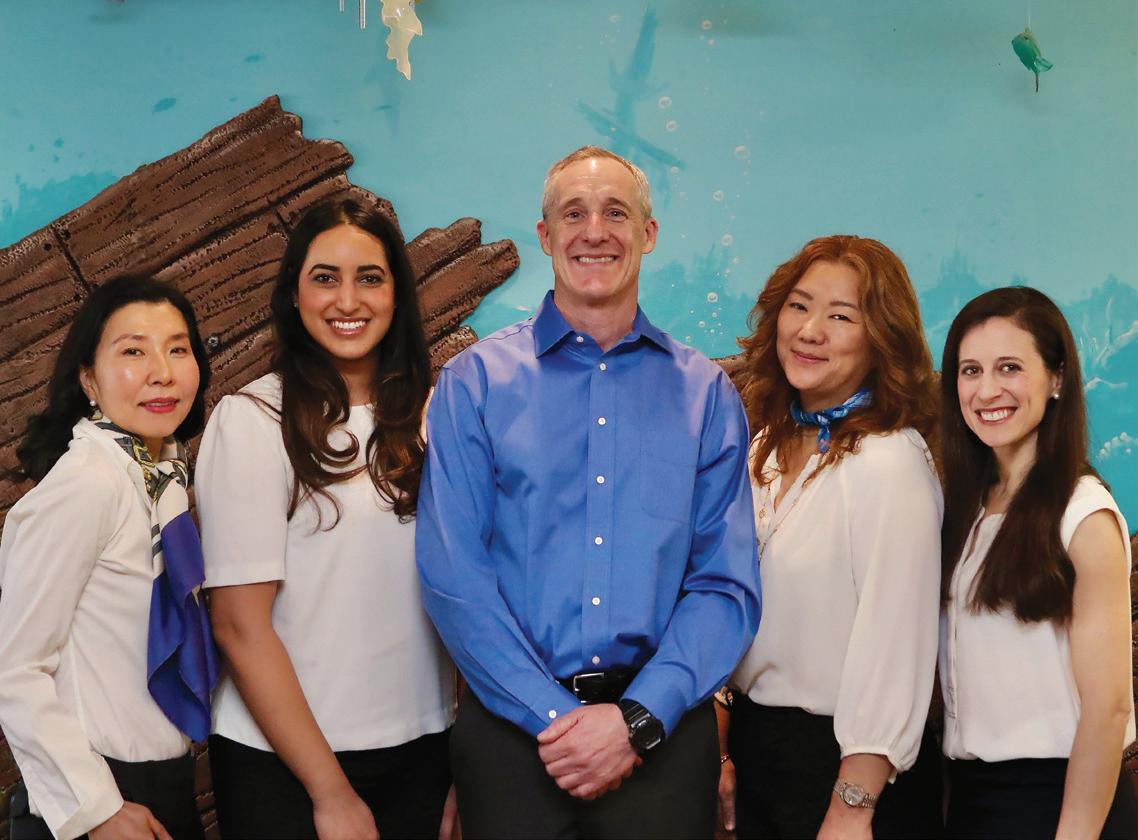



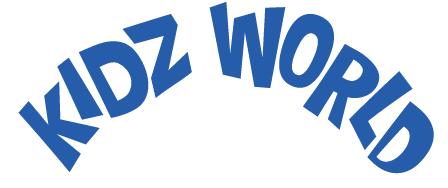




Energy drinks can have dangerous levels of caffeine and sugar for kids
BY ARRICCA ELIN SANSONE
nergy drinks are everywhere these days— even in school vending machines. Thanks to sometimes brightly-colored cans, teens especially are drawn to these beverages to help them wake up or for a quick boost at school or on the sports field.
But these drinks are risky. From 2022 to 2023, there was a 24.2 percent increase in calls to poison control centers for kids and teens younger than age 20 related to energy drinks. The numbers for kids ages 6 to 12 doubled.
Energy drinks often contain caffeine from multiple sources such as green tea extract, yerba mate and guarana. There’s no limit to how much caffeine each can have, and it’s not required to be listed on the label.
In fact, one popular energy drink contains roughly six to seven times the amount of caffeine as a typical soda. Kids who ingest too much caffeine may experience a
racing heart rate, nervousness, nausea, vomiting, diarrhea, insomnia and dehydration. Many energy drinks have more than 50 grams of sugar—that’s twice what most kids should ingest in a day.
The American Academy of Pediatrics recommends kids younger than 18 have no caffeine at all. Most pediatricians agree: “I’m not a big fan of these energy drinks,” says Chanel V. Thompson-Rogers, MD, assistant professor of pediatrics at Rutgers Health New Jersey Medical School in Newark. “They are not regulated and are not a healthy beverage for kids. The high amounts of caffeine wreak havoc on a kid’s brain, and the large amounts of added sugar increase a child’s risk of developing conditions such as diabetes, high blood pressure and high cholesterol.”
Talk to your kids about avoiding these drinks, and discuss alternatives. The simple truth? Plain old water is still the best choice for staying hydrated.
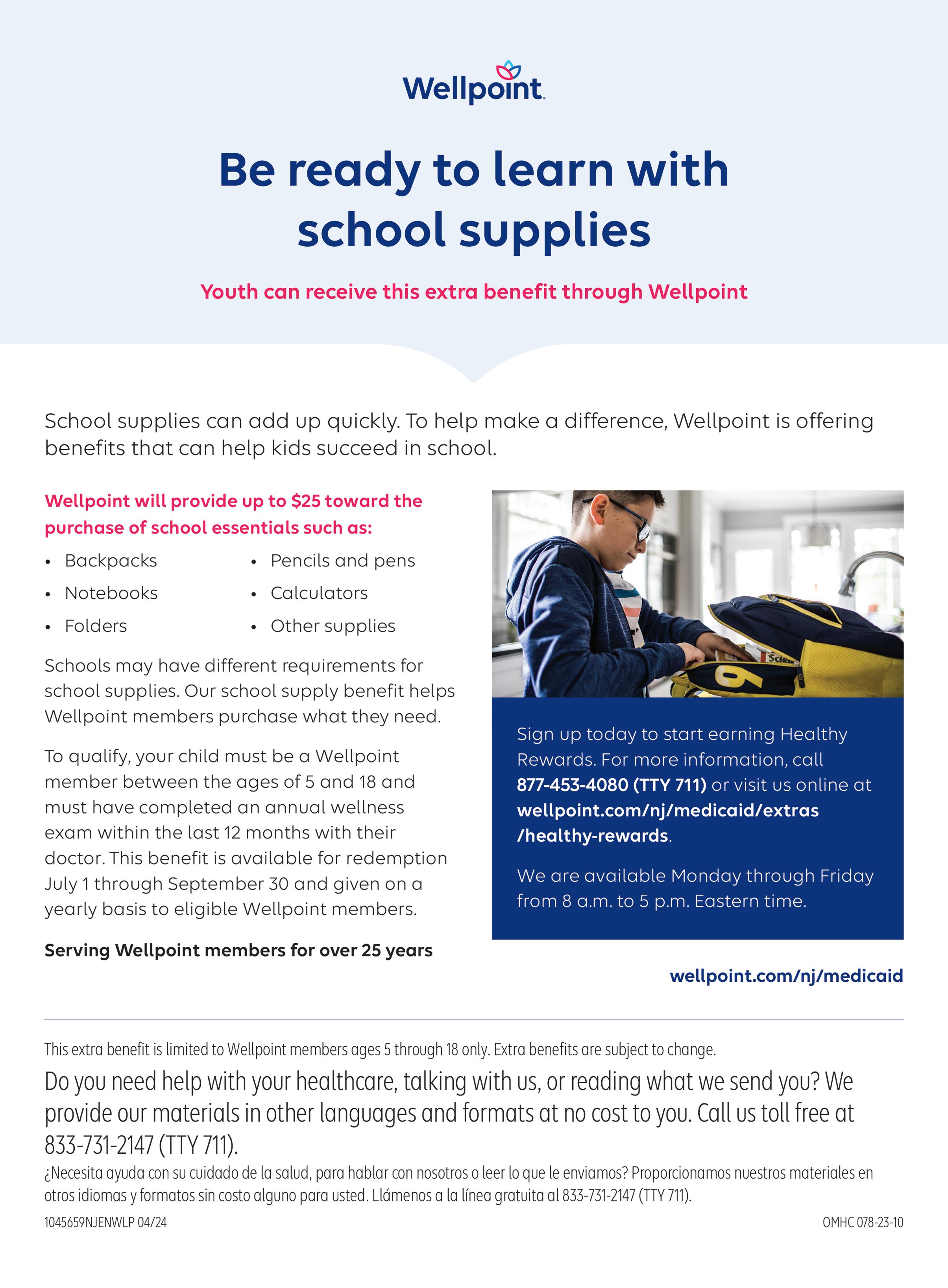

IBy ARRICCA ELIN SANSONE
t’s no secret as you shuttle kids to and from practices and games: Kids’ sports are huge, with about 46 million children participating each year.
Unfortunately, sports injuries are also common, with more than 3 million kids injured annually.
But involvement in sports doesn’t mean your kid is destined to get hurt: there are many ways to help your child stay safe.
Overuse injuries are one of the most common in kids’ sports. They can happen when a child plays the same sport all year, using the same muscles over and over without rest. “These can cause pain, swelling, or limited joint movement,” says Mark A. Rieger, MD, senior pediatric orthopedic surgeon at The Pediatric Orthopedic Center in Cedar Knolls, Springfield and Wayne.
“Pediatric orthopedists treat them by identifying the cause and recommending rest, activity changes, or special exercises to help them heal.”
Encouraging kids to try different sports is helpful because then they aren’t repeating the same motions. “We see many kids who concentrate on one sport, such as baseball, who end up with
their dominant shoulder and elbow affected, while their legs aren’t getting as much work. With soccer, they’re using the lower muscles, not the upper,” says Jason Womack, MD, chief of the Division of Sports Medicine and head team physician at Rutgers University Athletics. “When you have a child specializing in a specific sport, you’re going to see overuse injuries. Planned periods of rest are essential.” In addition to overuse injuries, other common sports injuries include:
BROKEN BONES: “The skeletal system is not mature in kids, so they’re at high risk for broken bones because the bones are not completely formed and fused at the growth plates,” says Womack.
SPRAINS AND STRAINS: Sprains refer to ligaments that are stretched or torn, while strains are when muscles are injured. “We see a lot of twisted ankles and knees in kids, as well as wrists and fingers,” says David Gealt, DO, assistant director of medicine at Cooper Bone and Joint Institute.
CONTUSIONS: These are bruises caused by a direct blow to the body, a fall, or a collision on the playing field, says Gealt.
KIDS SHOULD HAVE DAYS OFF EACH WEEK, AS WELL AS TIME IN BETWEEN SEASONS.

CONCUSSIONS: “About 10 percent of concussions are sportsrelated,” says Gealt.
Of course, you can’t protect your child from everything, but there are a few ways to ensure he or she is ready for play:
Have your child try various sports. “The most important thing is to have your kid involved in different sports, not just one,” says Womack. “They’re not training other muscle groups when they use same motions repeatedly, which leads to overuse injuries.” These injuries include Sever’s disease, which causes heel pain and is common in jumping sports like basketball; Osgood-Schlatter disease, which is knee pain and also is common in running and jumping sports; and throwing injuries in the elbow.
Make sure your child participates in a pre-season fitness routine. “You don’t want your kid to go from couch potato to intense activity,” says Gealt. Help them learn the appropriate sports-specific warmup routines before they start playing. That can be formal training led by the coach, or something as simple as running around the backyard playing catch or going to the batting cage.
Keep gear in good shape. Kids should wear appropriate and properly-fitted gear such as protective pads, helmets, eye protection, protective cups, face guards and mouthpieces.
Teach kids to speak up. If they’re hurt, they should say something and not try to play through the pain, says Womack. Work on flexibility and strength. Stretching after games and practice can increase flexibility, while conditioning exercises build muscles.
Plan periods of rest. Kids should have days off each week, as well as time in between seasons. “Even professional athletes take time off to rest and recover,” says Gealt.
Keep kids hydrated. Kids should drink water before, during and after exercise to prevent dehydration—in both hot and cold weather.
For soft tissue injuries such as strains and sprains, you may be able to treat at home. Remember the mantra RICE: rest, ice, compression, elevation. Have kids rest; ice the area for 20 minutes a few times a day (but don’t put ice directly on the skin); use an elastic compression bandage to prevent swelling; and elevate the injured area above the heart.
You can also give your child an age-appropriate dose of an anti-inflammatory, such as Tylenol, for pain. “Try home care for a day or two, but if the pain persists or gets worse, see your child’s doctor right away,” says Womack. Ditto if your child can’t bear weight on an injury or can point to a specific spot that hurts.
For injuries that have been treated by immobilization, such as a broken bone, ask your child’s doctor about a referral for physical therapy, even if just for a few sessions. “This can help your child learn exercises to regain range of motion,” says Gealt.
Kids who are diagnosed with a concussion need to follow the doctor’s recommendations for both physical and mental rest. “We’ve come a long way in understanding and treating concussions in the last two decades. It’s important for parents to understand that kids should not return to play or return to learning too soon,” says Gealt.







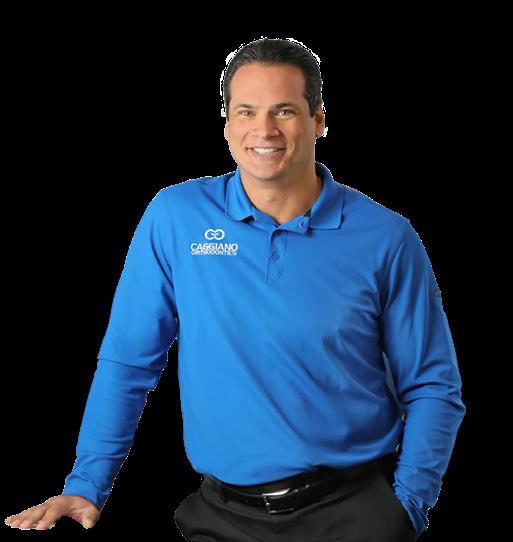



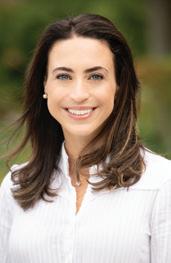




How to decide whether daycare or preschool is right for your child
WBy JENNIFER AMATO
hen it comes to childcare, every family’s needs are different. A lot depends on your little one’s personality—things like how they handle being around new people and how adaptable they are to new situations— and then of course there’s your schedule, transportation, and how ready you are for your child to take that next step. So how do you know if it’s the right time to start daycare or preschool? And how do you find the right fit? We turned to the experts to help make your decision a little easier.
Daycares typically enroll kids age six weeks and older, offering parents full-time coverage, with hours before and after work. A traditional preschool setting is geared toward 3- to 5-year-old children to prepare them for a formal school setting.
Both options provide structure and learning along with play, and can offer instruction in world language, music, physical education and art for kids as young as 3. Tricia Velez, director of Wonder World Nursery School in Union, said a big focus is on hands-on experiences and purposeful play to build strong academic readiness and social-emotional growth.
Mary Diggan, director of Admission and Enrollment at Chapin School in Princeton, says many of the differences are logistical: daycares often have cameras in the room, while preschools do not. And because preschool-aged kids are generally in a school with other grades, they are exposed to older kids as well as the whole school community.
There are many things to think about before making a decision, no matter which option you choose. Ask who will be with your child all day, what experience they have, how information will be communicated to you, and if the center is licensed or accredited. Find out what the daily schedule will be, what the dropoff and pickup times and procedures are, whether enrichment activities are planned, and how snack and mealtimes go. Pay close attention to health, safety, security and cleanliness guidelines.
“Make a wish list of the ideal features, then be sure to ask each school for a clear explanation of everything it provides, as well as the fees. Having all the facts and costs up front will help parents
decide which option is the best fit for their family,” says Dharati Patel, franchise owner of Primrose School of Wayne, which offers both preschool and daycare programs.
New Jersey has a “kindergarten cutoff” of October 1, so your kid’s birthday could play a role in deciding, too. “It is important to keep the kindergarten start in mind when thinking of preschool classes and programs because you want to keep scaffolding and helping children build on experiences,” Diggan says.
Of course, you also need to weigh the cost. Preschool has limited hours so the cost is likely less, but hours are not compatible with full-time work schedules. Daycare is designed to give parents full coverage, both before and after work. The goal is to provide care that fits your schedule and meets your childcare and educational needs, Velez says.
“Children start learning from the moment they are born, and research shows that 90 percent of their brain develops in the first 5 years of life,” says Patel. “For parents seeking centerbased care, partnering with a high-quality, well-rounded early childhood education provider is the first step to maximizing the power of a child’s first five years. When looking for high-quality early education, parents should consider early learning and care approach, proven results, learning environment, safety, parent communication and accountability.”
Each family should look at their own schedules, consider their child’s interests, take note of their individual milestones, and recognize what makes them feel comfortable, says Diggan, who was previously the director of Early Childhood Education at Chapin, as well as an early childhood teacher for many years.
“Students who are used to a schedule, clear expectations, and practice following a few simple directions have the easiest adjustment when attending a preschool,” she says.
Patel says there should be a balance between cognitive, physical and social-emotional development.
“It’s important to remember that children are often more resilient than people think.” Diggan says. “As long as they are entering an environment that provides for their needs and makes them feel comfortable and cared for, they will adjust and love it.”

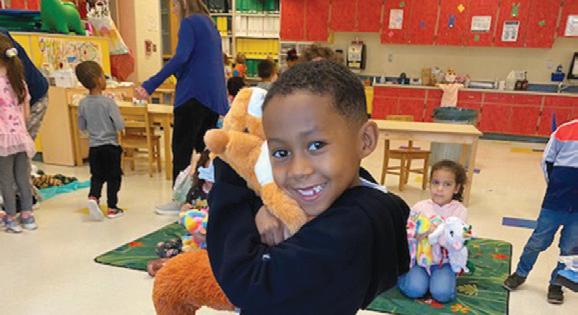
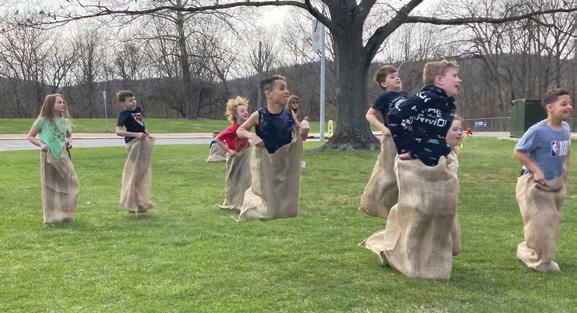

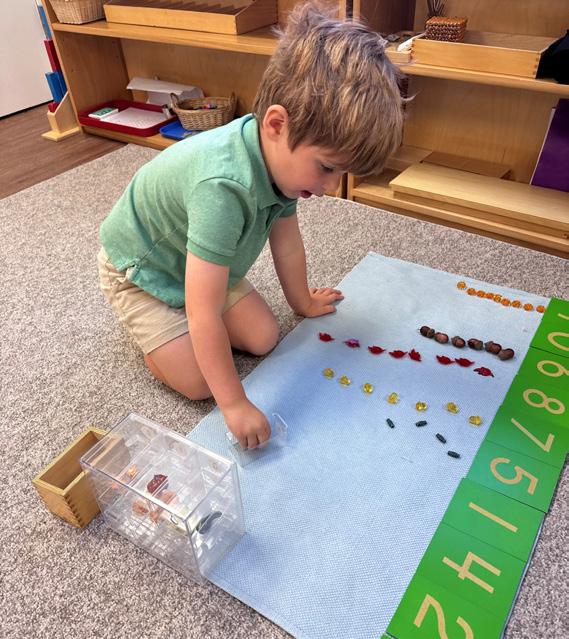












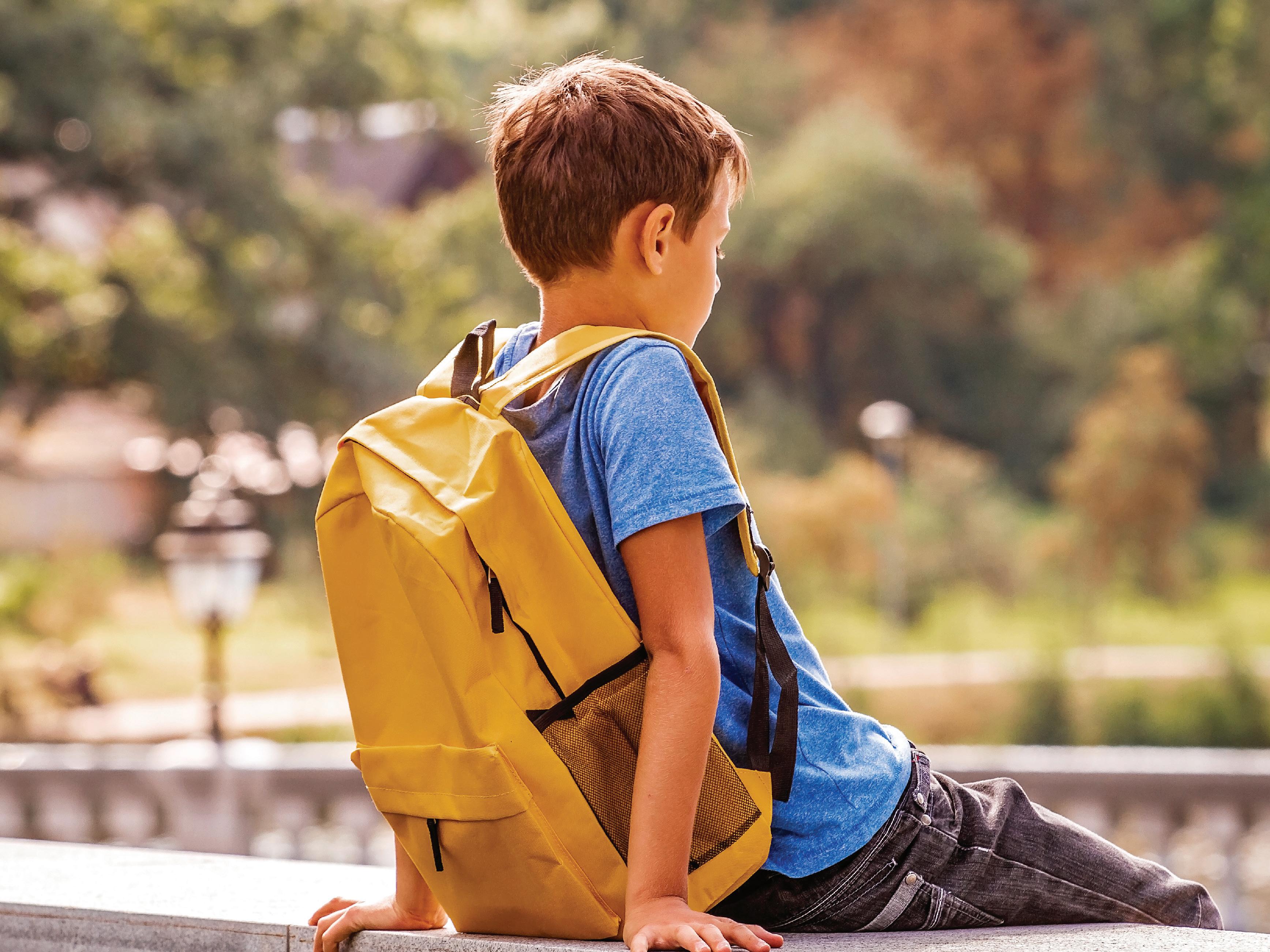
By RONNIE KOENIG
ach time our daughter transitioned to a new school, I worried. Leaving the familiarity of a known environment is tough for any child—but with an autism diagnosis, the experience can feel especially overwhelming. While many kids with ASD struggle with changes in routine, my concerns for E (now 13) centered around whether a new learning environment would truly support her needs—especially as she moved from a smaller elementary school to a larger middle school.
Ronak*, a fellow mom from Princeton, had similar worries about her 12-year-old son, who has autism and a genetic disorder. Since he isn’t verbal, she feared new teachers and aides wouldn’t understand how to meet his needs. “He’s a well-behaved kid,” she shared, “but if he’s hungry or has a stomach ache, he may cry, be non-compliant or not attend to his tasks.”
Fortunately, there are strategies that can help your child—and
you—navigate this big transition with greater ease and confidence.
“The biggest challenges I consistently observe are behavioral struggles,” notes Viktoria Wargo, M.Ed., a special education teacher for Princeton Public Schools. This is expected, she explains, since behavior often functions as communication. “When students have limited verbal skills, they may communicate by crying, laying on the floor, or even eloping.”
She also points to the difficulty of day-to-day transitions, like getting from the bus to the classroom or from recess back to learning time—especially in an unfamiliar building.
Catriona Francis, Ed.M., a board-certified behavior analyst and director of the Douglass Developmental Disabilities Center in New Brunswick, adds that learning new routines and

expectations is often especially difficult for kids transitioning to less restrictive settings.
One common issue, she notes, is the breakdown in communication between old and new school teams. Sometimes information about what has worked for a student isn’t passed along—or isn’t welcomed by the receiving team. This lack of continuity can make the transition harder and lead to avoidable challenges.
When E moved to a new school, her current team arranged visits to the new environment in advance. That made all the difference. Teachers also created social stories she could read and reread to better understand what to expect.
Ronak helped her son adjust by sharing a video with his teachers showing how he likes his rice and curry mixed to the right consistency. She explained that he uses the word “itching” to describe discomfort. These simple insights helped his teachers better understand him—and recognize his abilities. “He can do and understand much more than what he projects,” she said.
Before any student enters her classroom, Wargo makes a point to read all available evaluations and assessments, and to connect with the child’s family. She also uses a wide range of visual supports, including pictures, schedules, posters, sign language and assistive tech. She encourages the use of comfort items or transition objects that help students adjust to new settings.
Francis emphasizes the importance of collaboration between the current school team and the new one. One of the best first steps?
Having your child’s future teacher observe them in their current classroom. This allows the new educator to see what’s working and start planning how to maintain that support.
Visits to the new school—especially multiple ones—are also hugely beneficial. If possible, have a familiar teacher or aide accompany your child. That presence can ease anxiety and help make the new environment feel safer and more predictable.
These visits don’t just help your child—they also give the new staff valuable insights into your child’s strengths and needs. Building positive experiences in the new setting can shift the way your child views the school—from intimidating to inviting.
If in-person visits aren’t possible, Francis recommends working with your case manager to arrange alternatives—like sharing photos or videos of the new classroom, cafeteria or playground.
Ronak suggests picking up your child from school (when possible) to speak with their aide and hear how the day went. These face-toface conversations gave us a clearer picture of what was happening and helped staff connect with us as a family.
“The most important part of building a trusting relationship between families and schools is communication,” says Wargo. “The more we talk and share, the stronger the connection—and the more success we’ll have together.”
—Ronnie Koenig is an NJ mom of twins. Find her at facebook.com/AutismGirlMom.


What to factor, know and ask

SBy JENNIFER KANTOR
o you’re thinking about private school. Maybe it’s a family tradition, or you’re drawn to the world-class facilities. Perhaps your child needs more than a public school can offer. Or maybe you’re just exploring the options. With as many private schools as there are reasons to consider one, the challenge is finding the right fit—for your child and for your family.
Do you prefer a traditional or progressive philosophy? Artsy or STEM-focused? Boarding or day? Large or small? Practical factors like commute and cost also come into play. Start with an ideal vision, but keep your options open. For instance, religious schools—which offer prep school perks, often at lower tuition—generally welcome students of all faiths. “It’s the diversity of perspectives that truly enriches the Trinity Hall experience,” says Head of School Theresa Kiernan, who leads the all-girls Catholic school in Tinton Falls. Single-sex schools also offer distinct benefits. Boys are more likely to pursue perceived “gendered” interests, while girls find empowerment. “Research confirms what we see every day: when girls learn in an environment intentionally designed for them, they thrive,” she says.
Does your child thrive in a structured, competitive setting, or something more nurturing and flexible? Environment matters more than things like family legacies or college admissions.
“Focus on who your child is right now—not just who you hope they’ll become,” says Kelly Reilly McCarthy, director of marketing and assistant director of admissions at Lacordaire Academy in Upper Montclair. “It’s natural for parents to bring their own hopes and expectations into the school search. Many are influenced by their educational experiences or by what they believe a successful path should look like. But a school that fits your child’s unique set of needs will give them the best opportunity for a positive outcome.”
With a working list of criteria, search platforms like Niche, GreatSchools, and Private School Review for academic stats, studentteacher ratios, demographic info, curriculum, accreditation and more. Consider reviews, but look for overarching themes, not the stray

A GREAT DEAL ABOUT THE SCHOOL’S CULTURE

negative post. Your list can also guide conversations with family and friends, social media and school websites. This will give you a broad overview, but to truly understand a school you need to visit.
Information sessions showcase a school’s philosophy, curriculum, programs, facilities, faculty and leadership to prospective families— if there’s a vibe check, this is it. They help you feel if a school might be right for your child and worth pursuing. Virtual tours are helpful as an initial filter and can sharpen your questions but aren’t a substitute for seeing the real thing. If possible, attend a daytime open house to see the school in action. Day or evening, book open houses as soon as possible, especially for popular schools where spots are limited.
Most private schools require special standardized testing for consideration, and scores can help determine whether a school is realistic or a reach—but they aren’t everything.
“Testing is an important piece of our holistic review process. That said, we’re tasked with building balanced and diverse classes,” says Alexis Sommers, Newark Academy’s director of Enrollment Management and Institutional Strategy. “Ensuring an academic match is a priority, but beyond that, we look at how students will contribute to the community beyond the classroom. While the process is competitive, it’s also student-centered by design and aimed at seeing the best in each student,” she says. So even with a less than ideal score, if a school feels like a fit, apply.
Typically more intimate and in-depth, tours let you see if a school truly walks its talk. It’s your chance to ask key questions about growth metrics, discipline, teacher turnover, as well as diversity and inclusion. Parents should also closely watch the students, says Reilly McCarthy.
“How students interact with others can reveal a great deal about the school’s culture and values. Do they make eye contact and offer a greeting as you pass by? Do they hold the door open for others? Do they seem actively engaged in their learning? Look for signs of kindness, respect and confidence in how they carry themselves.
These everyday interactions speak louder than any view book or tour guide,” she says.
A star lacrosse player needs a competitive sports program. An award-winning robotics program might be a must for an MIThopeful. Artists require studios, supplies and creative spaces. Simply put: the right school will nurture your child’s passions and help them discover new ones. Arguably as important as academics, enrichments, extracurriculars and clubs tell you what a school prioritizes, who attends, and if your child will find what they love.
To get the full measure of a school, speak to anyone who can spill the tea on things like diversity, social climate, workload, and other things that aren’t in the brochure. Attend public events like sports games where you can casually chat up parents and kids, and look for school ambassador programs that connect prospective and current families. Some even let you directly message parent volunteers through the school website.
Fit is ultimately mutual, and many schools insist on classroom immersion assessments and shadow days as part of the application process. “This is really a two-way interview. It allows teachers and students to get to know your child, but just as importantly, it gives your child the chance to ‘interview’ the school as well,” says Reilly McCarthy. So ask your child: How did they feel about the teaching style? Were they welcomed by other students? Are they excited? Insights gleaned are priceless.
It’s true: an independent education can be expensive. “Schools recognize the cost and financial commitment required to enroll,” says Sommers. Traditionally, aid flows to lower-income families, but increasingly schools are offering help to families who are comparatively affluent. “There’s been a push to attract and enroll more partial-need families. This is to help increase socioeconomic diversity and mitigate the barbell effect* that can happen at independent schools,” she says. So don’t be discouraged by cost— private school may be more affordable than you think.
“Admissions decisions can be influenced by many factors beyond a child’s qualifications or fit, including enrollment limits and balancing the overall student body. This is a situation many families face, and it can certainly be disappointing,” says Reilly McCarthy. That doesn’t mean it wasn’t a good match, or that the second choice won’t turn out to be the right fit after all. If, however, your heart is still set on a specific school, keep in touch with admissions—spots do open up unexpectedly.
“Ultimately, staying open-minded throughout the process gives your family the best chance of finding a school community where your child will succeed,” she adds.
And that’s what it’s all about.
KALI9 *The barbell effect refers to schools with full-pay and scholarship students, with limited middle income kids to bridge the cultural divide.
— Jennifer Kantor is a Maplewood-based parenting and lifestyle writer and a mom of two.




From swim lessons and youth sports to fitness and enrichment classes, the Y has programs for every age and interest. Come grow stronger with us — in spirit, mind, and body. Explore programs at gscymca.org/programs

Get to know independent schools in NJ and beyond.
private, independent and coeducational day school for Middle School (grades 6-8) and Upper School (grades 9-12) students, Morristown Beard School (MBS) is a place where students develop individual pathways to academic success and personal fulfillment while becoming enlightened, morally responsible citizens of the world.
The school’s small class sizes and dynamic curriculum allow students to engage in deep learning and explore their passions. Students are supported on their journey of self-discovery while being challenged to explore their unique ideas, find their distinct voice and cultivate a love of learning.
“We believe the marriage of rigorous academics and social-emotional learning combined with all of our offerings here at MBS creates a balanced educational experience for our students,” says Head of Middle School Alonda Casselle.
MBS offers an independent study program, a range of advanced course offerings, competitive athletic programs, and 40 student-led clubs and community service opportunities, including student government, Model UN and coding. Although academic rigor is prioritized at MBS, it’s never at the expense of personal growth—class schedules are designed so that students can successfully balance their academics with the pursuit of their passions, whether in athletics, the arts or other activities.
“Our coaches meet the needs of both high-achieving athletes as well as those who just want to try something new, and we create our schedules so students can engage in multiple areas of interest—we’ve had students setting school records in sports like swimming while at the same

time performing as the lead in the school musical,” says Head of Upper School Ryan Liese. “We strive for a balance between rigorous academics and enriching extracurricular activities.”
To assist students on their journey towards becoming responsible and active global citizens, the school requires community service of all students in grades 6-12. From local to international outlets, MBS students and faculty contribute their time and talent to support the needs of surrounding communities. The school supports organizations such as Habitat for Humanity and InterFaith Food Pantry, hosts two yearly blood drives, and coordinates annual international service trips in addition to providing an array of other opportunities for students and their families to give back.
MBS is a place for experiential, handson learning, with signature academic programs that include Learning Outside the Classroom Walls and Social Emotional Competencies in Middle School. In the Upper School’s Interdisciplinary Concentrations Program (ICP), students apply for one of four concentration
pathways at the end of their freshman year: Arts and Innovation; Global Citizenship; Ethics, Leadership, Justice; or Data Analysis and Research Methods.
The 22-acre campus boasts state-ofthe-art spaces that reflect its commitment to innovative teaching and learning, highlighted by the 8,000-square-foot Center for Innovation & Design (CID), 25,000-square-foot Math & Science Center and Science on a Sphere®, a six-foot diameter sphere that uses computers and video projectors to display planetary data. The CID offers cutting-edge technology and dedicated studio spaces where students are empowered to explore emerging fields and make a positive impact in their community. The school’s Centers for Learning provide an unparalleled network of academic support services for students as well as opportunities to foster creativity, innovation and collaboration.
A CLOSE-KNIT, SUPPORTIVE COMMUNITY
“One thing people always point out to us is how happy our students are. There’s a lot of pressure on kids today, but our students know that going to school can be fun—and they genuinely want to be here,” Liese says. “They know they’re going to be challenged but that they’re in a supportive environment where they can feel free to make mistakes or experiment with something new to see if it’s a good fit.”
At MBS, all students are known and seen, and the school strives to create a close-knit sense of community and belonging for both students and their families. “From hosting events for families to get to know each other before school starts to creating opportunities for students in all grades to gather regularly, it’s our goal to bring our students and families together,” Casselle says. “We take the time to get to know each student on a personal level. We truly care about our students, and they know it.”




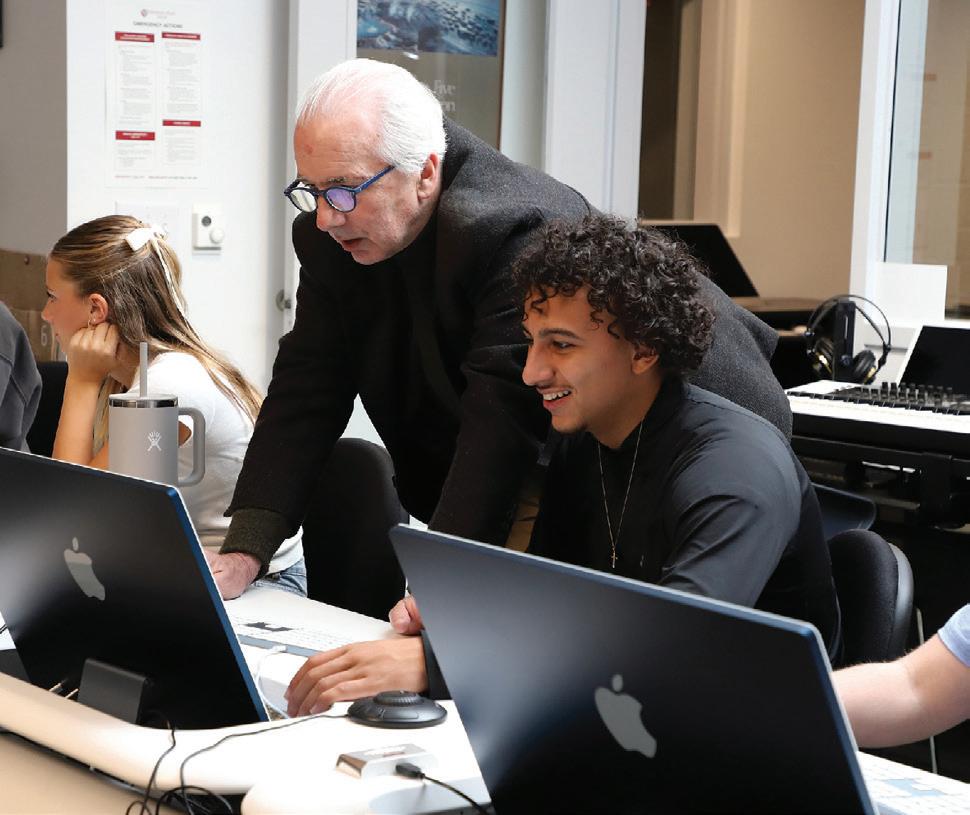
2 CONVENT RD., CONVENT STATION • 973-290-5200 • AOSENJ.ORG
s the longest-standing all-girls Catholic high school in New Jersey, the Academy of Saint Elizabeth is an independent college preparatory school focused on promoting academic excellence and moral responsibility within young women. Founded by the Sisters of Charity of Saint Elizabeth in 1860 as Saint Elizabeth’s Academy (SEA), the school is celebrating its 165th anniversary of leading in allgirls education, promoting a scholarly environment and community of faith.
The Academy has continued to uphold its mission to develop students’ minds in wisdom, hearts in service and lives in faith. Students embrace prayer every morning, celebrate Mass together several times each month and participate in service-oriented projects throughout the year.
“Our goal is not only to instill great moral character, but we also want our girls to learn how to express gratitude and give back to the community through the development of their faith,” says Dr. Beth Azar, principal.
With students from 72 towns throughout Morris and Essex counties, AOSE boasts a rigorous curriculum and extensive course catalogue, including 17 AP courses and several University Now courses offered through Saint Elizabeth University. Small class sizes ensure students form close relationships with one another, develop their individual interests and receive personalized instruction from teachers.
“Our girls call themselves ‘SEAsters’ because they will forever feel connected to each other through the sisterhood that
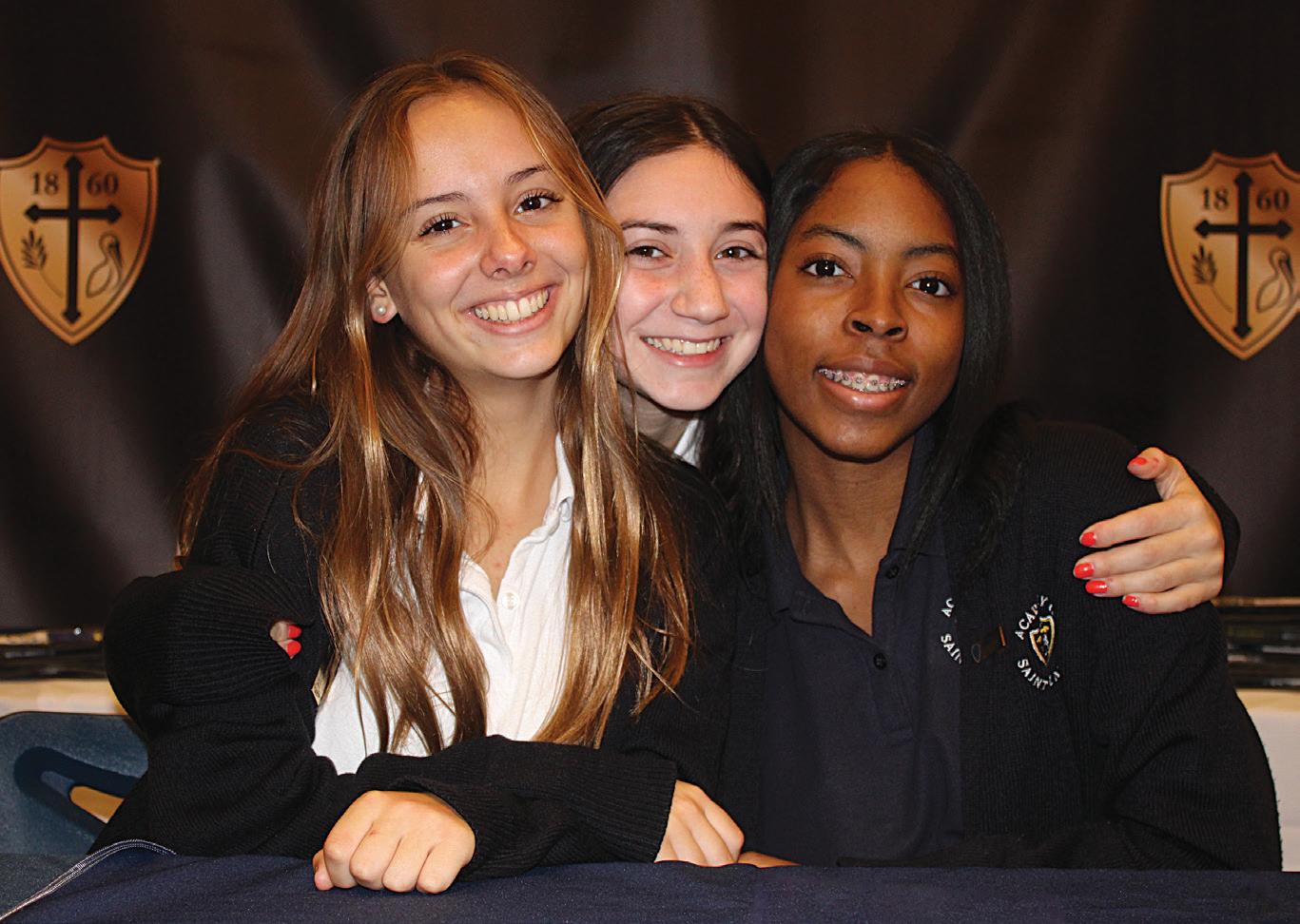

was developed during their time here,” Azar says.
AOSE also offers 13 varsity-level sports, more than 50 student-led clubs, and a robust dance and performing arts program, which includes fall and spring musicals. The school shares athletic fields with the surrounding colleges of Fairleigh Dickinson University and Saint Elizabeth University, providing student-athletes
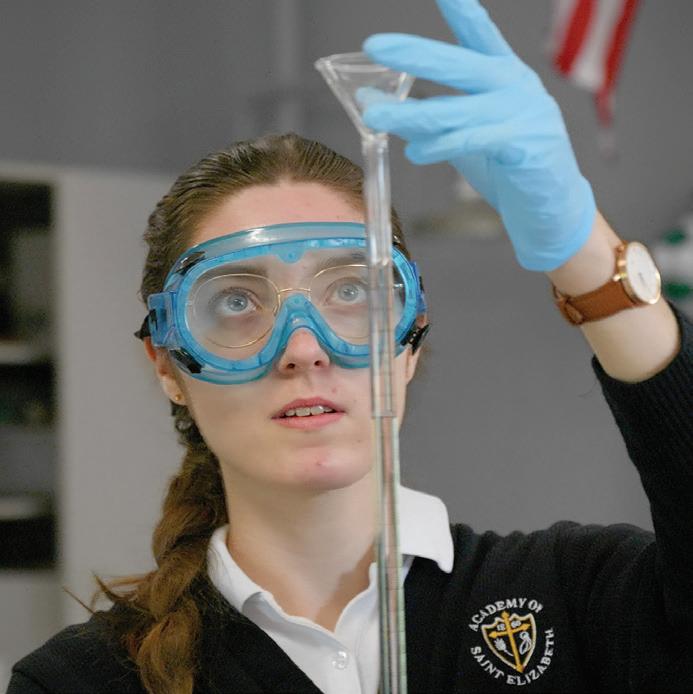
with access to NCAA facilities.
To enhance students’ future success, AOSE has added an on-staff career/college counselor whose focus is to help students prepare for life beyond the academy.
“We seek to support and encourage our girls as they enter the next chapter of their lives, but so many of our former students have told us that AOSE will always feel like home,” she says.
arnstable Academy is a private college preparatory school that provides a warm and supportive environment designed to help students thrive. The school specializes in a relationship-first teaching approach in a small classroom setting that provides academic excellence in addition to social and emotional support.
Barnstable offers college preparatory, honors and AP-level courses as well as specialized executive functioning courses, an Accent Reading program, and 1:1 teaching for both gifted students as well as those who need extra academic support in certain subjects. Teachers genuinely care about their students, encourage individual strengths and support student growth. “Our school remains small by design so that we can continue to provide a personalized education to every student,” says Head of School Ashley Crowley. With an average class size of 8 to 12, teachers are able to address students’ unique strengths and provide support as needed. Each class utilizes multimodal teaching methods to meet the demands of a variety of learners. Barnstable students consistently achieve AP test scores above state and national averages and earn merit-based scholarships. The school also offers a post-secondary counseling program. “Barnstable Academy provides an ideal environment for bright students to thrive in a small school setting,” she says.
Barnstable has an extensive offering of clubs, enrichment classes and electives, many of which have been student-driven; they include soccer,


varsity basketball and cheer, performing arts, mock trial, neurodivergent club, math or coding club, and introduction to stop-motion animation. A parent ambassador organization supports the school community as a whole, while an active community service club, student government and National Honor Societies spearhead community service opportunities and engagement for students.

“We often hear from parents that our school has given them their child back. They are once again excited to learn and feel seen and understood by our teachers, staff and peers,” says Director of Admissions and Outreach Carlton Tanis. “Our ability to be able to hone in on each student’s particular interests and create opportunities to try new things or dive deeper into their passions truly allows our students to reach their full potential.”
Chatham Day School (CDS) offers an ambitious program that promotes intellectual achievement and emotional growth in a diverse and nurturing environment, where students learn in small classes and can take advantage of its sprawling 15-acre campus. The school celebrates and values each child as a unique learner with extraordinary potential.
PERSONALIZED ATTENTION AND INDIVIDUALIZED LEARNING
CDS is committed to keeping class sizes small, with a maximum of 14 students per class, to allow teachers to provide differentiated teaching strategies and personalized attention. “We will never sacrifice on the size of our classes,” says Head of School David Buffum. “We feel very strongly about holding to that philosophy of small classes, because that really is the most important part of our mission.”
The school offers an array of extracurricular activities, including theater, basketball, soccer, cross-country, fencing, chess and robotics competition teams.
At CDS, every student is known, valued and celebrated, and the school is dedicated to fostering interests and encouraging meaningful relationships. “Parents appreciate the frequent communication from teachers and the personalized approach from the ‘institution’—we always put that in quotes because we prefer to handle most issues relationally and not institutionally,” Buffum says.
CELEBRATING AND REWARDING BRAVERY
As students push themselves outside of their comfort zones and into the spotlight, from classroom presentations to participation in the spring musical, teachers and fellow students reward this bravery. In turn, students reach higher and further than
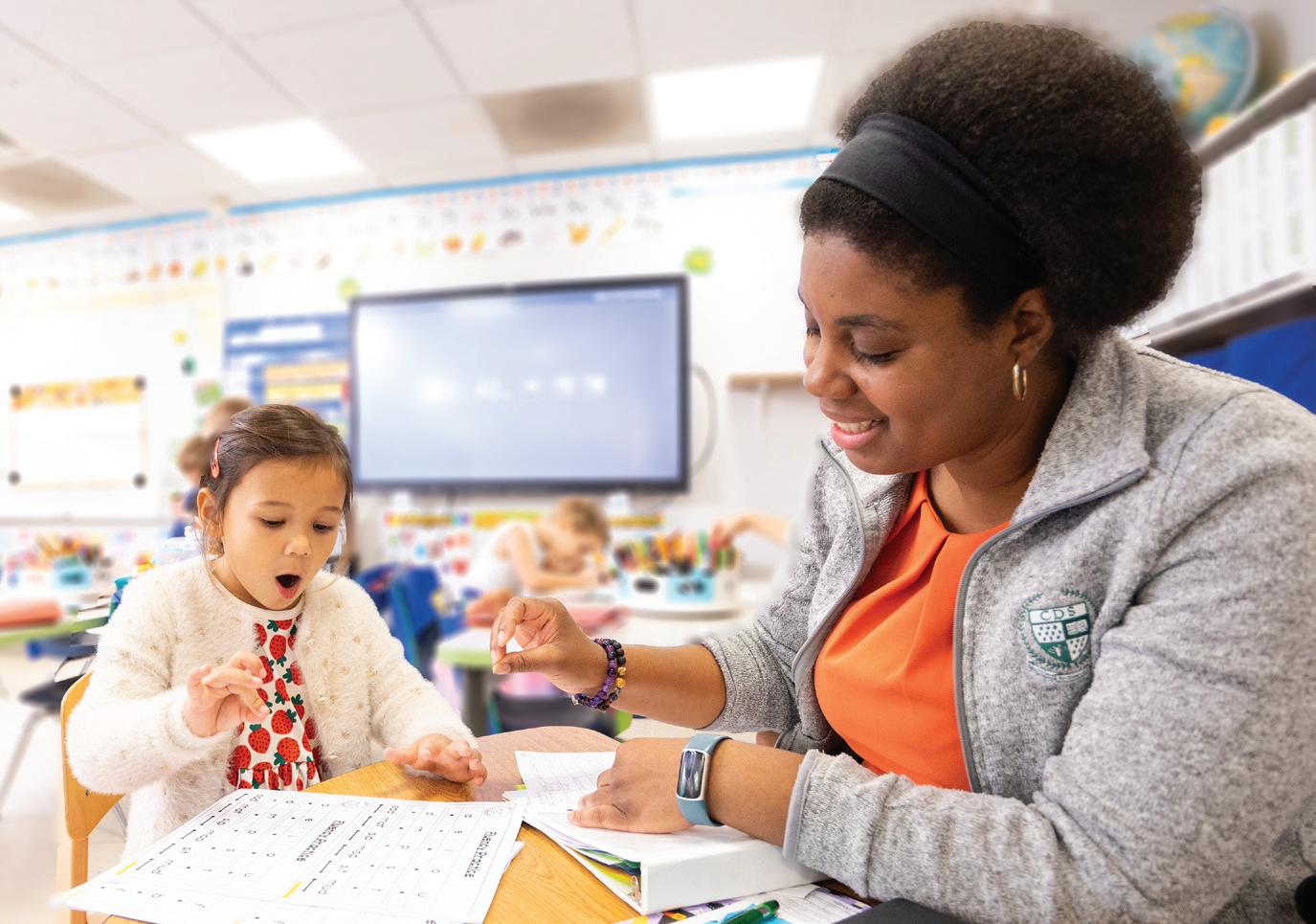

they ever thought possible.

“We are proud of our teachers for being such good communicators, and proud of our students for rewarding bravery in one another,” Buffum says.
At CDS, teachers encourage selfadvocacy and leadership from even the youngest grades, whether it’s an eighth-grader assisting a kindergartner in reading a new book, or a pair of third-
graders assisting younger students with a science experiment.
“Teachers are ubiquitous in all areas, and our administrators know each student and family member by name,” Buffum says. “We have school events like everyone else, but it is in the aggregate of interactions that a community is truly made. When you attend CDS, you become part of our extended family.”
At Christian Brothers Academy (CBA), high school students are encouraged to unlock their full potential. In addition to the pursuit of high academic achievement, CBA strives to promote well-being and develop resilience and empathy while supporting the bonds of brotherhood formed within its halls.
A two-time National Blue Ribbon School of Excellence, CBA’s educational model is known for its complete, holistic educational experience both in and out of the classroom. Based on the teachings of St. John Baptist De La Salle, and nurtured by the founders and lay people of the Academy, CBA’s mission to provide a contemporary and balanced Catholic high school education that develops intellectually mature and morally responsible leaders has shaped men of character since 1959.
“No child is simply the student who sits in row two with an 85.5 GPA, but rather a child entrusted to the care of the educator—deserving of mentorship and support in mind, body and spirit,” says Director of Mission Integration Matthew Meehan.
The opening of a Bloomberg financial lab, digital media studio, makerspace, visual arts studio and expanded performing arts room provide students with opportunities to explore their passions and develop skills in core academic disciplines. CBA students are involved in awardwinning theater and music programs, 18 interscholastic varsity sports, and nearly 50 extracurricular activities that include a range of academic, service-based, cultural, social and creative clubs.
A COMMITMENT TO HELPING OTHERS
“Students at CBA are learning at a high


level while at the same time developing as grounded, well-rounded men of character,” says Director of Enrollment Jennifer Maccarella.
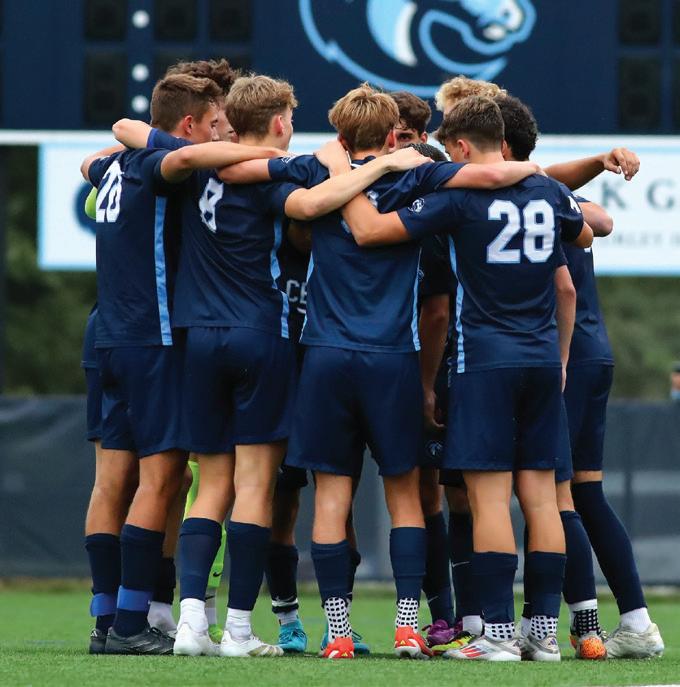
In addition to daily theology classes and school-wide masses, class-level retreats and clubs devoted to community outreach, CBA offers service immersion trips to various sites around the country, enabling students to put their faith into action.
“I’m inspired by our students’ dedication and commitment to impactful service experiences, both locally and across the country,” says Principal Neil Begley, Class of 1996. “Each component speaks to the holistic approach of CBA’s Lasallian educational model, developing young men of faith, character and action.”
15 TOWER HILL RD., MOUNTAIN LAKES • 24 CHANGEBRIDGE RD., MONTVILLE • 973-334-1234 •
n independent school specializing in working with students with learning disabilities in grades 2-12, The Craig School features small class sizes and proven researchbased learning strategies, including structured language, multi-sensory instruction and a whole-child approach.
CUSTOMIZED LEARNING CREATES CONFIDENT STUDENTS
“The magic of The Craig School is that students’ strengths are known and understood, since they all face similar challenges,” says Head of School Susan Schmitt. “These challenges may have set them apart in their previous schools, but here at Craig we celebrate achievements and strengths to create confidence in each student.”
For 45 years, The Craig School has employed teachers trained in specific learning strategies and techniques, such as Orton-Gillingham, who can effectively support students with diverse learning profiles, customize educational programs and provide transition support for students as they progress through each grade or move on to post-secondary education.
The school continues to expand its emphasis on science and math through curriculum enhancements and facilities, such as its brand-new multimedia design center. “We keep enhancing our offerings and developing customized plans and strategies for each and every student to provide a truly individualized learning experience,” Schmitt says.
The Craig School is known for its specialized instruction tailored to meet the unique needs of students with learning disabilities. The independent school prioritizes individualized programming

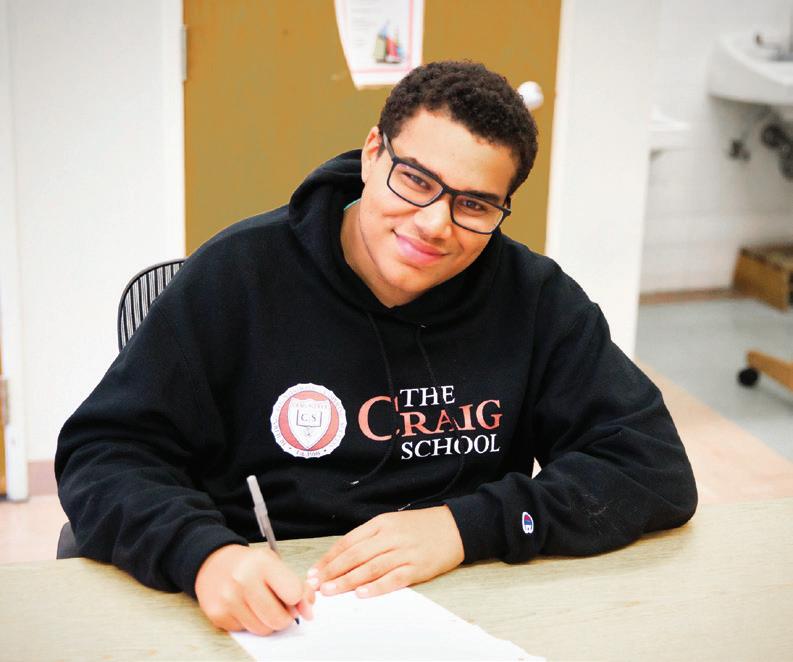
and creates enriched learning environments that ignite passion and curiosity among students.
The school also provides a multisensory teaching approach to enhance learning and retention, and uses technology such as text-to-speech software, speech recognition tools and specialized apps. Occupational therapy, speech and language therapy and counseling are integrated directly

into each student’s academic schedule to ensure that they don’t miss any instruction to receive these services.
“The Craig School strives to create a nurturing and supportive environment for students,” Schmitt says. “The staff is trained to understand the social-emotional aspects of learning disabilities and provides emotional support to help students build self-esteem, develop resilience and foster positive relationships.”
The Elisabeth Morrow School (EMS) provides exemplary academics and character development in a diverse and inclusive child-centered community that inspires students to become curious scholars, ethical leaders and global citizens.
“We intentionally move beyond a high-stress, test-focused environment to cultivate a deep and genuine love of learning,” says Head of School Marek Beck, PhD. “Students are empowered to engage deeply with subjects they love, igniting a passion for learning that’s intrinsically linked to our core values of courtesy, consideration, cooperation and compassion.”
BEYOND THE CLASSROOM
Through the school’s innovative, project-based curriculum, students tackle real-world challenges, connecting their learning to pressing issues and practical applications. This approach cultivates a culture of deep inquiry and creative problem-solving. “If you ask one of our students why they’re studying something, it’s not going to be ‘because it’s on Friday’s test’—they’ll explain how it relates to a problem they’re trying to solve or an issue they’re raising awareness about,” Dr. Beck says
Hands-on learning takes place on a wooded 14-acre campus, a certified natural wildlife habitat that serves as a living laboratory. The immersive environment features state-of-the-art technology labs, innovation hubs and nature trails, and is complemented by extracurriculars in STEM, athletics and the arts that nurture intellectual curiosity and creative expression.
FOSTERING LEADERSHIP WITH LASTING CHARACTER
As the only independent school in New

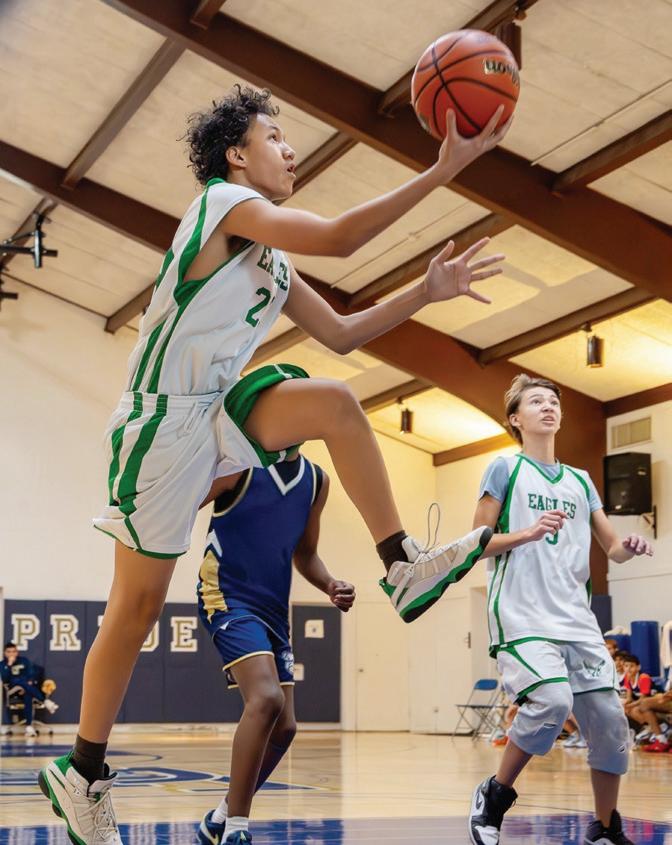
Jersey recognized as an Apple Distinguished School, EMS infuses emerging technologies into its curriculum, from computer science for kindergarteners to an entrepreneurship class for middle schoolers. The diverse, international community provides an authentic foundation for developing a global perspective. Students become not just curious scholars but also effective leaders and communicators, encouraged to ask incisive
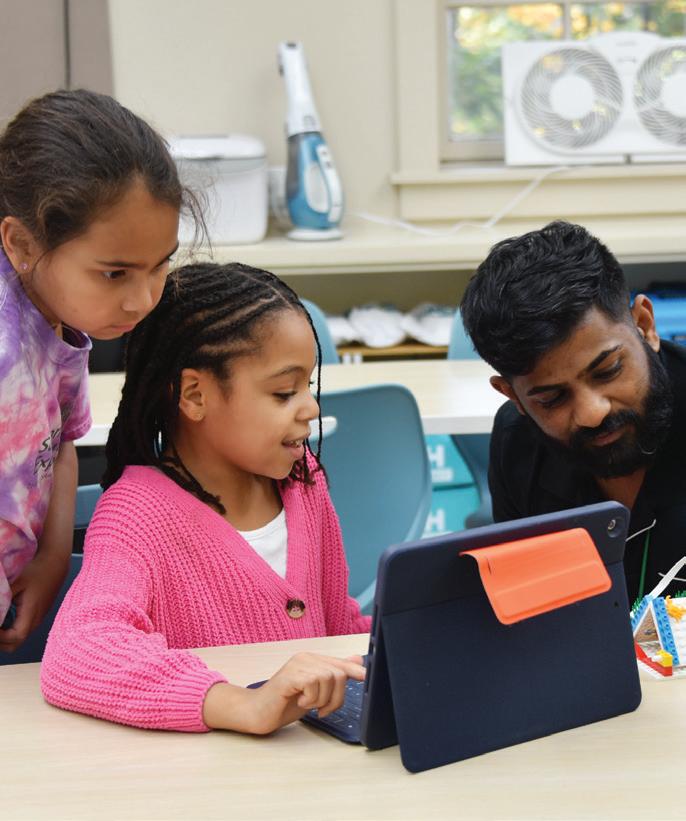
questions and take intellectual risks to build the confidence necessary for influential leadership.
“When we visit secondary schools, admissions officers often tell us they can spot our students right away; they’re the ones who give a firm handshake, hold the door for others and thank their teachers at the end of class…their character truly shines through,” Dr. Beck says.
52 GREAT HILLS RD., SHORT HILLS • 973-379-3442 • FARBROOK.ORG
At Far Brook, progressive education isn’t just a buzzword; it has been the educational philosophy guiding the school since its founding in 1948. Serving students age 3 through eighth grade, Far Brook is known for its hands-on approach, integration of the arts, focus on social justice, and emphasis on learning in nature. This unique child-centered experience is why staff, families and alumni often say that Far Brook is truly “school as it should be,” and what continues to draw generations of families back.
At Far Brook, it’s believed that childhood only happens once and that play is the work of the child—natural curiosity and wonder are not rushed or set aside, but treated as essential to deep learning. Students are encouraged to be in the moment and explore. They use math to tackle real-world problems like littering, using data and calculations to propose authentic solutions.
Students also design empathy-driven video games by calling on their storytelling skills, creativity and capacity to consider diverse perspectives. Using the joy of childhood as a vehicle for learning is not a detour from excellence—it’s the very definition of it.
This intentional approach extends beyond the classroom; through immersive trips, learning in nature and hands-on experiences, the curriculum comes to life and engages children with the community. “Reflection and experimentation help our students build critical thinking skills,” says Head of School Amy Ziebarth. “They create TED Talk-style projects and deliver personal graduation speeches. In our teaching garden, which brings joy to everyone on campus, they learn
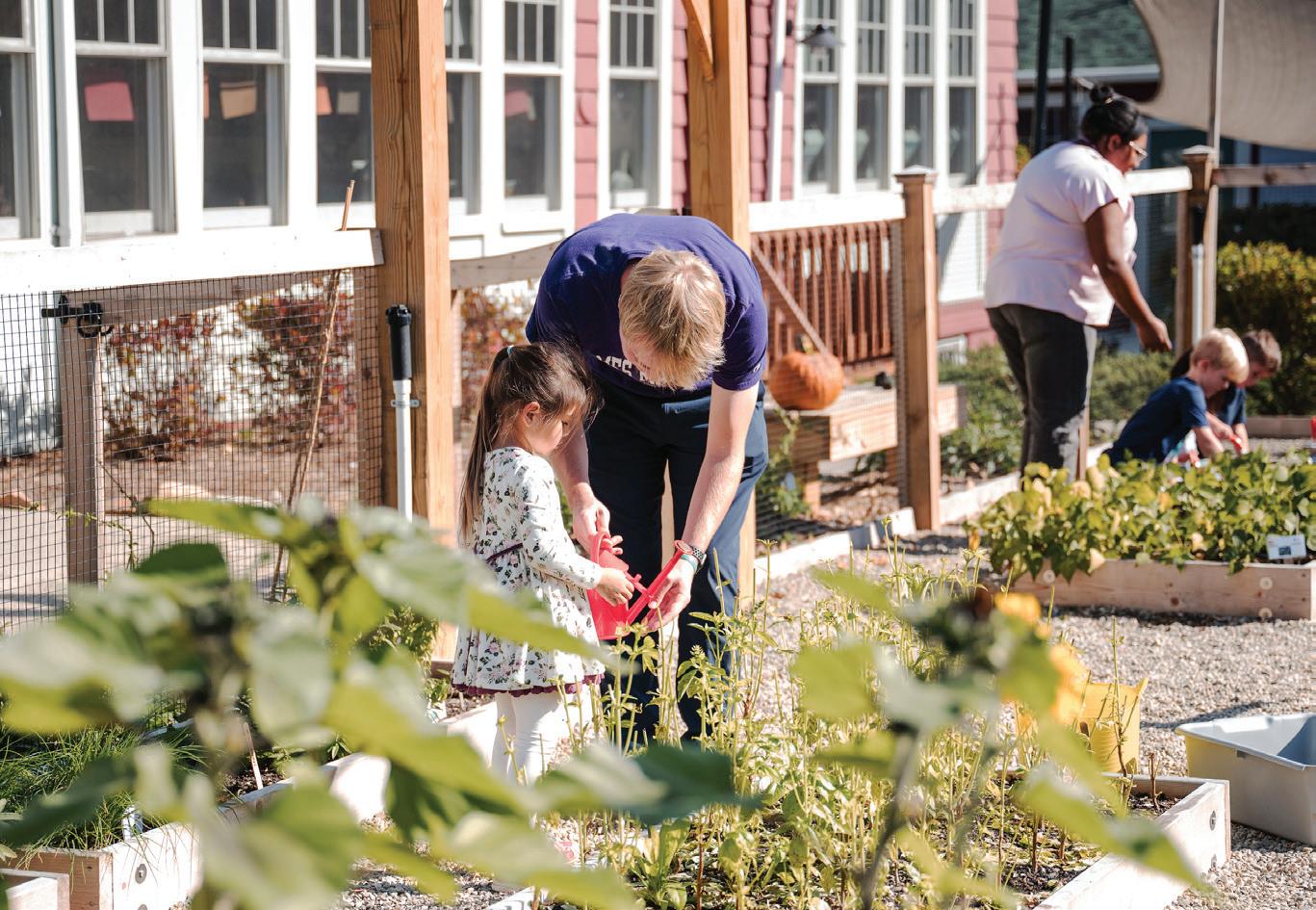

to grow food and share our harvest with community partners who offer assistance to those experiencing food insecurity.”
Far Brook’s holistic strategy builds adaptability and courage. All students participate in sports, art, world language, music, drama, athletics and woodshop. “This full participation allows students to collaborate, discover new strengths and

support one another,” Ziebarth explains. “It’s one of many ways they develop independence and self-assurance during their Far Brook journey. Our eighth-grade graduates have had experiences many students don’t encounter until much later, which means they enter high school with not only a strong foundation but remarkable breadth and confidence.”
697 RTE. 202, FAR HILLS • 908-766-0622 • FHCDS.ORG
At Far Hills Country Day School, excellence isn’t one-size-fits-all. Here, students are encouraged to explore, question and grow in ways that align with who they are—and who they’re becoming. With a strong foundation in both academics and character development, students are set up for long-term success in a world that values empathy as much as achievement.
“At Far Hills, we believe that success in the modern world requires more than just strong academics—it takes empathy, resilience, and the confidence to lead with integrity. Our students are not only challenged to grow intellectually, but also supported in becoming thoughtful, curious, and kind individuals,” says Head of School Georgia S. Zaiser, a former teacher and administrator, and mom of two alumni.
This belief shapes a learning environment that is dynamic, hands-on, and deeply student-centered. Teachers use research-backed strategies like mind-brain education, embrace emerging technologies, model core values, and engage in continuous professional development. Every student is seen, known, and empowered to discover their unique path. The school’s motto, In Virtute Multi Ascensus—“There are many degrees of excellence”—is more than words; it’s a lived philosophy.
POWER IN STUDENT VOICES
On its 54-acre campus—complete with a ropes course, pond, mountain biking trail and STEAM lab—Far Hills gives students space to explore both the natural world and their inner potential. With opportunities in athletics, music and performing arts, plus more than 80 chances to speak publicly


before graduating, students gain confidence and clarity in their communication.
“At every stage, students are discovering not just what they can do, but who they are,” Zaiser adds. “We give them the freedom and encouragement to explore, to lead, and to grow into their full potential.”
The school’s holistic approach fosters
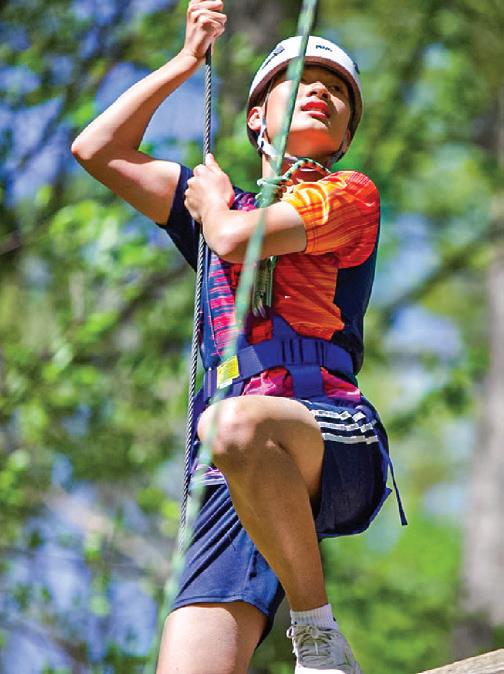
resilience, creativity, and a lifelong love of learning, ensuring that every student is set up for success in an ever-changing world. From preschool through eighth grade, self-directed learning, emergent curriculum and real-world experiences help students uncover their passions and develop the confidence to thrive—in school and beyond.
80 TOWN SQUARE PL., JERSEY CITY • 201-234-4781 • FRANKLINJC.ORG
Since its inception in 2022, Franklin School has been providing students with an extraordinary educational experience that has already made an indelible impression on students, parents and fellow educators.
The independent high school was recently nominated a “Top 10 School for Innovation” by T4 Education, not only for Franklin’s innovative approach to learning, but also for all the opportunities students can’t find anywhere else—from a cutting-edge curriculum and Academic Care program to a student incubator and state-of-the-art Fab Lab and athletic facilities.
“We’ve created a school like no other in the community, but accessible to so many—our goal continues to be broadening access to a world-class private education for students,” says Head of School William Campbell. “We’re consistently being recognized not just because our academic programs are technology-forward, but because we’ve created a synergy between innovative pedagogical practices and those that have been tried and tested…and it works.”
At Franklin, students pursue passions with purpose. The school cultivates curiosity, resilience and social responsibility, preparing students to thrive in an ever-changing world.
With a globally-oriented, rigorous curriculum and a strong advisory model, students benefit from exceptional mentoring, emotional support, and sustained academic development.
“We help students develop an insatiable love of learning, and all while providing them with an unparalleled level of support,” Campbell says.


In addition to a strong core curriculum and AP courses taught by industry leaders, students can take micro-courses and electives that build real-world skills essential for success in today’s top universities and workplaces.
The state-of-the-art Franklin Fab Lab empowers students to design and create through project-based learning. The on-campus incubator helps them develop

startups and nonprofits, building the mindset of ethical entrepreneurs.
“Our commitment to transdisciplinary learning enables students to make connections that solve real-world problems,” Campbell says. “It’s why even in our early years Franklin students are already standing out, winning global competitions and earning admission to top-tier public and private universities that are renowned for academic excellence and competitive selectivity.”
ST. BERNARD’S RD., GLADSTONE • 908-234-1611 • GSBSCHOOL.ORG
Celebrating its 125th anniversary, Gill St. Bernard’s (GSB) is a mission-driven school that provides a balanced, whole-child approach to prepare preschool through grade 12 students academically, socially and ethically for college and a meaningful life.
“GSB is a place that sharpens minds and softens hearts—a place where students can develop a passion for learning and be profoundly shaped by generosity of spirit,” says GSB’s new Head of School Dr. Delvin Dinkins.
EXPERIENTIAL LEARNING FOR PRESCHOOL THROUGH GRADE 12
Students explore and learn on GSB’s sprawling 208-acre campus, which features two trout streams, a performing arts and community center, and an on-campus working farm where teachers partner with farm staff to create lessons in biology, animal science, and the arts and humanities.
The school is committed to the concept of learning outside the traditional classroom setting with project-based programs that strengthen students’ skill sets while broadening their worldview. These include the Lower School’s Biome Project, Middle School’s environmental STREAMS program, and Upper School’s signature Spring Unit Program, a two-week immersive study experience involving local, national and international travel.
Along with rigorous academics, the school provides countless opportunities for students to identify and pursue their passions, including service-learning programs that offer students the opportunity to give back. Athletics are also an important part of the student life experience, and the campus offers state-of-the-art facilities for

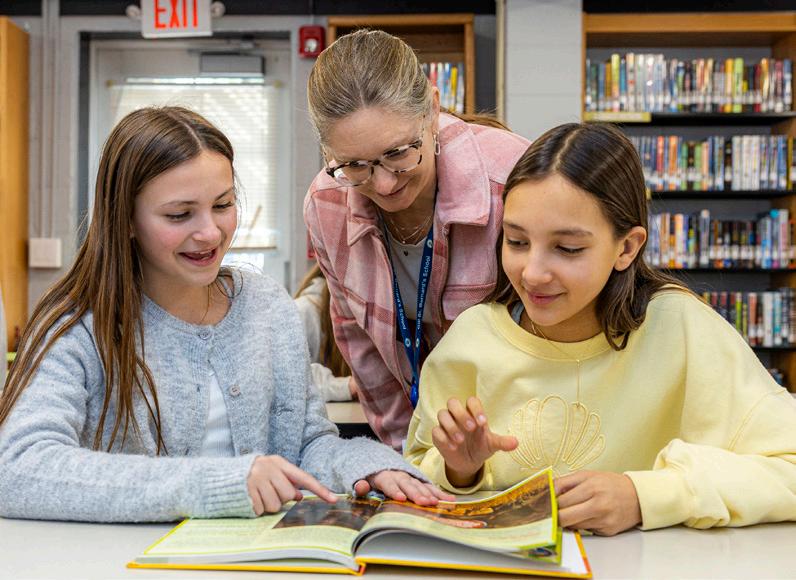
40 teams across 15 sports. Whether it’s athletics, performing arts or giving back to their communities, students at GSB are encouraged to step outside of their comfort zones and to explore interests both in and out of the classroom.
For many families, GSB is the right fit because of the school’s emphasis on community. Starting with preschoolers, each division has assemblies and town meetings

where students of all ages can practice their public speaking skills and have their accomplishments celebrated.
“Here at GSB, all children are known and supported. Our social-emotional curriculum and strong advisory and counseling programs create an environment where kids feel seen, understood and respected,” says Ann Marie Blackman, director of Admission and Financial Aid.
Lacordaire Academy’s threeacre campus in Upper Montclair blends a smallschool education with rigorous academics that prepare graduates to enter the world. The 104-yearold independent college prep school offers a co-ed education from pre-K through eighth grade, and an all-girls Upper School.
“We have a tight-knit, family-focused school culture where every student is known, seen and cared about by our staff. It’s a place where children get to have a wholesome, age-appropriate childhood,” says Director of Advancement and Enrollment Management Saydi Callahan Keefe.
PREPPING FOR COLLEGE (AND LIFE) DOMINICAN STYLE
Lacordaire was founded by the Sisters of St. Dominic as a French-English school for girls. It has since evolved into a co-ed Lower and Middle and an all-girls Upper School led by a leadership team that upholds Dominican values of scholarship, moral character and care for the common good. Every Lacordaire student participates in community service, such as volunteering at food pantries, senior centers and environmental clean-ups.
“We love our Catholic identity under the Dominican sisters of Caldwell, and through their leadership and values we’ve cultivated a very diverse community, culturally and religiously—and that diversity benefits our entire school culture,” Callahan Keefe says.
Lacordaire provides a robust schedule of events, celebrations and galas, and opportunities for parent and community involvement. Domestic and international travel is highly emphasized. “We get students off campus and let them see the


world, visit important places and develop a deep appreciation for art, travel and other cultures,” she says.
Lacordaire students can get involved in activities ranging from Mathematics Honor Society to visual and performing arts programs, along with an array of other clubs, organizations and sports teams. All students in pre-K through fourth grade take French as an elective. Lacordaire students also have access to

the school’s rigorous public speaking program, and the Middle and Upper divisions have award-winning forensics, debate and mock trial teams.
“Public speaking is a priority for each and every one of our students; even our youngest learners are challenged to find their voice and learn how to speak in front of large groups of people—and how to argue in a respectful, educated way,” she says.
The Montclair Cooperative School is a leader in progressive education where student voice is valued and respected, and children become active participants in their own learning journey. Following the cooperative model, teachers, parents and students work together to create an equitable, supportive environment where all students thrive.
From preschool at age four through eighth grade, the school’s small class sizes provide opportunities for deep connections between students and teachers. This affords students ownership of their work and the development of a lifelong love of learning. “These authentic relationships create meaningful experiences for students, teachers and parents—they truly are the heart and soul of our school,” says Director of Enrollment Management Emily Kohan.
Montclair Cooperative School’s mission is to create a nurturing and diverse environment where children grow and flourish intellectually, emotionally and socially. “Our school puts just as much emphasis on social-emotional growth as it does on academics—our classrooms provide opportunities for collaboration, problem-solving and developing empathy,” Kohan says. “We believe a child who is socially and emotionally in a positive, balanced environment has a strong foundation for continued study, growth and academic risk-taking.” Co-op teachers create deep and personal connections with students, and get to know each child’s way of thinking individually and in groups to ensure the curriculum meets the needs of each new cohort. “We always say we aren’t teaching

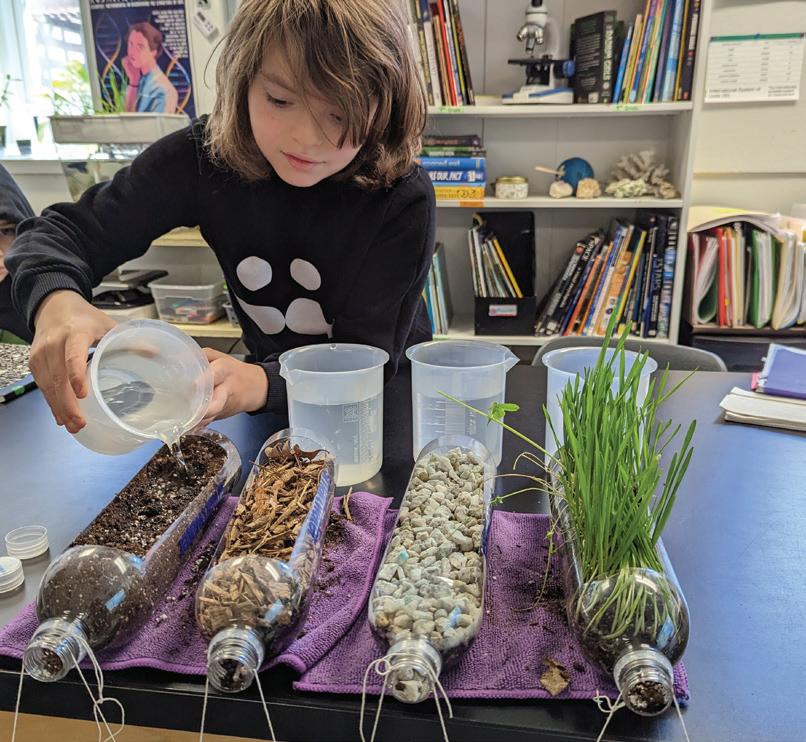
lessons, we’re teaching children. When you put the emphasis on the child, that’s where the magic unfolds,” she says.
At the heart of Montclair Cooperative School’s success is community and a deep sense of connection with everyone involved in the co-op. The school believes parents are partners in their children’s education; they are invited to participate

in numerous aspects of co-op life, from assisting in their child’s classroom to lending their time and talent by serving on various committees.
“When family members are visible in the school setting, children realize how large their support system is,” Kohan says. “Developing care and compassion for everyone within our school community is so important to us, and we wouldn’t be who we are without it.”
235 HOPE RD., TINTON FALLS • 732-542-4777
• RANNEYSCHOOL.ORG
t Ranney School, an age 3 through Grade 12 college preparatory school, students are encouraged to become curious learners. The school offers a robust and rigorous course of study across disciplines with expert and nurturing faculty that inspire, challenge and support students.
NURTURING A WELL-ROUNDED
Students are encouraged to take advantage of all Ranney has to offer while exploring emerging talents and interests. Students receive personal attention through small class sizes and a myriad programs to support them in their academic and personal growth.
A dedicated college counseling team helps Upper School students navigate the college application process, while a robust advisory program addresses the social-emotional learning needs of all students.
“When it comes to navigating the application process, our highly experienced team is well-positioned to help Ranney students succeed in an increasingly competitive college landscape. We have the lowest student-to-counselor ratio of schools in the area, and thus can provide individualized attention,” says Head of School Dr. John Griffith.
Ranney School’s collegiate-style campus provides endless opportunities for students, such as a new finance and business studies certificate and co-curricular opportunities like an award-winning Future Business Leaders of America club through its Bloomberg Finance Lab, featuring the only Bloomberg terminals in the area.
Ranney students pursue their passions at a high level, from the award-winning arts department and three Middle School ensembles to more than 40 varsity, junior varsity and middle school athletic teams.

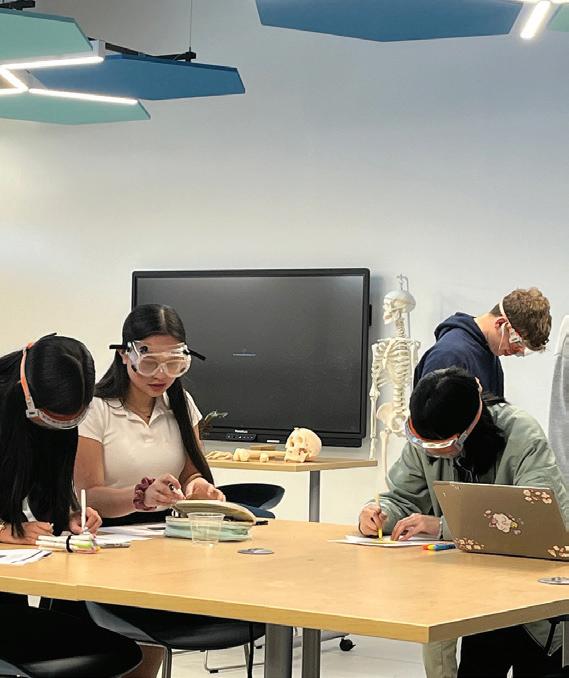

The school introduced new science labs and has a wide-range of AP science courses, including a scientific research class in the Upper School, and a focus on experiential and hands-on learning in Lower and Middle School.
“The opportunity to learn about science at the pond, the greenhouse or in the community garden—or take classes outside using the outdoor classroom—are
a benefit to students in all divisions,” he says. “Through co-curricular activities, students not only develop their skills and talents but also learn collaboration, resilience, organization, creativity, hard work and other life skills—and our students never have to choose just one area of interest.
“We encourage our students not just to fit in, but to stand out.”
101 CORREGIDOR RD., TINTON FALLS • 732-291-1297 •
n independent, all-girls school that educates and empowers young women in the Catholic tradition, Trinity Hall provides an innovative college preparatory program grounded in four core values: leadership, respect, perseverance and faith. The school prepares its students to achieve their full potential as they embrace their place in the world.
“Trinity Hall is a place designed specifically for girls and how they learn best,” says Head of School Theresa Kiernan. “Students are immersed in an environment of academic, athletic and artistic excellence while being supported in a nurturing, caring community that puts students at the center. We believe girls can do anything when they know how much they matter.”
Independently governed and taught with an all-honors curriculum in the Catholic tradition, the school’s “Circle of Support” ensures students have resources to help them reach their full potential while fostering a sense of community, such as a student advisory program, Big Sister/Little Sister program, health and wellness program, and a daily student support period.
The school’s comprehensive college counseling program assists students in reaching their goals, while robust arts and athletics programs allow young women the opportunity to learn, create and compete at the highest levels. Trinity Hall is home to more than 40 clubs and student organizations and 16 sports teams.
In the fall of 2025, Trinity Hall will open its new academic wing and expanded



community space, adding 17,000 square feet to the campus footprint. The new academic building will add state-of-the-art STEM labs, a new arts conservatory and a full counseling suite. These additions will elevate the experience of every Trinity Hall student while attracting and retaining the best educators.
“In addition to the exciting enhancements to our school building, we will continue to look for ways to provide more
opportunities for our community and foster an environment where students can stretch themselves, grow by taking risks and persevere in the face of failure,” Kiernan says. “Our girls are supported by a world-class faculty that’s dedicated to providing the necessary support to help them thrive. Our school community lives in faith and shows up for each other—not just on special occasions, but every day.”
[MEET
901 RT. 10 EAST, WHIPPANY • 973-500-6480 • WINSTONPREP.EDU
Winston Preparatory School is redefining what it means to educate students with specific learning differences such as dyslexia, executive function deficits (ADHD), NVLD, dysgraphia and auditory processing disorder. Guided by its mission to facilitate independence in individuals with learning difficulties through assessment-driven, individualized education and research and outreach, Winston tailors every school day to the needs of each unique learner.
“Our students’ success is a result of highly individualized educational programming that reaches them in ways they’ve never experienced before,” says Head of School Erica Piche. All students receive a daily 45-minute, one-on-one Focus session aimed to target their areas of greatest need and develop essential skills such as resilience, self-advocacy and problem-solving. Winston Prep uses its evolving understanding of its students to ensure instruction never deviates from their needs.
Winston stays up-to-date on research and best practices, and invests more than 200 hours per year in professional growth opportunities for teachers. “The result is a school where students master the skills and strategies they need to thrive in college and beyond,” Piche says.
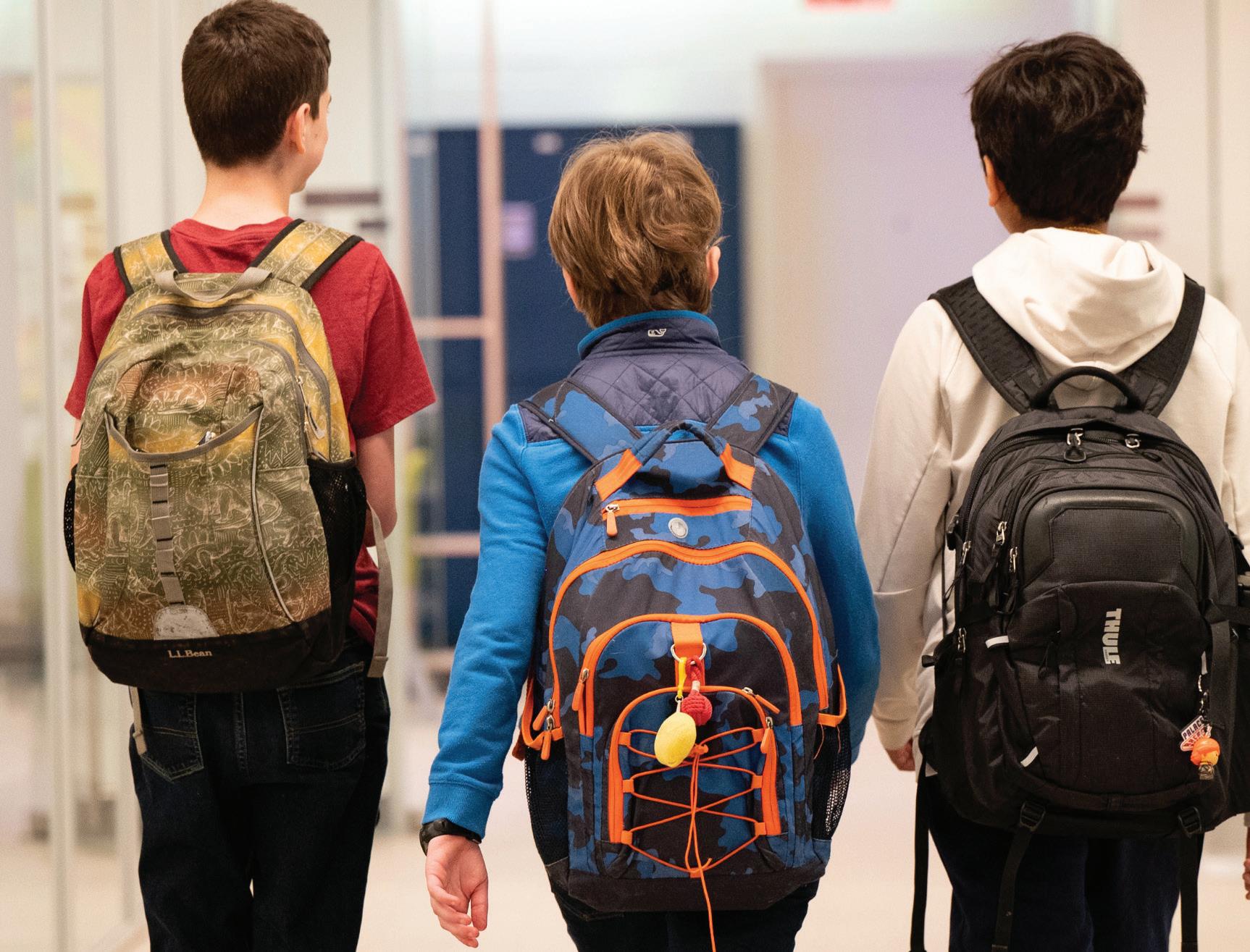

At Winston Prep, 80 percent of high school graduates go directly to a fouryear college, and about 70 percent graduate from college within five years— more than double the national average for LD students. “Our individualized, systematic approach to learning allows students to discover their personal best. Independence isn’t just a goal here, it’s an outcome,” she says.

cross-country, archery and pickleball, along with student council, theater and choir.
Learning and connection extend far beyond the classroom. Whether it’s overnight experiential education trips, social events or after-school activities, there are endless chances to build bonds and foster growth.
Students can dive into an array of extracurriculars, including basketball,
They can explore everything from drawing to 3D printing, D&D, TREPS, coding, newspaper and debate. Social responsibility is woven into the fabric of the school, with students leading food and book drives, hosting charity breakfasts, organizing fundraisers for local responders, and more.
[MEET
The Winston School of Short Hills is a vibrant learning community that unites students’ unique strengths with purpose-driven instruction to empower individuals with learning differences such as dyslexia, dyscalculia, dysgraphia, executive functioning issues and ADHD. Winston students develop skills as innovative thinkers and imaginative creators, and joyfully reach for their potential by building confidence, optimism and self-advocacy.
STUDENTS REACH THEIR FULL POTENTIAL
“We’re passionate about what we do. Families come to Winston primarily because they want their child to learn how to read and write, but just as importantly, they want their child to love going to school, have a sense of belonging and be happy learners,” says Head of School Dr. Josephine Diemond.
Winston is a nurturing and caring community of educators who put the needs of students first. Parents value the school’s Orton-Gillinghambased instruction that’s multisensory, personalized and differentiated to meet the needs of each student in all academic subjects.
“Our students often say that they don’t know where they would be without Winston. We have a school full of teachers who are passionate about working with students who learn differently and who become cheerleaders for every child,” Diemond says. “It’s tremendously gratifying and rewarding to see our students achieve their true potential.”
STRATEGIES FOR LEARNING AND SELF-ADVOCACY
Through the Winston Center for Learning, the school provides myriad


after-school activities that include LEGOs, baking, basketball and a homework center; a Summer on the Hill camp that combines academics, sports, science and the arts; as well as a Speaker Series.
Students and families take advantage of field trips, festivals and book fairs and participate in community service projects ranging from collecting food for Thanksgiving to making cards for patients in local medical facilities.

“Our students develop what we call their ‘Winston Toolbox’—strategies for learning that they take with them when they move on to competitive private day and boarding schools and public schools,” she says. “Our students are prepared academically, socially and emotionally to achieve great things in the next journey in their academic careers and beyond—and they are happy learners and fantastic self-advocates.”
75 KNICKERBOCKER RD., ENGLEWOOD • 201-871-8808 • ABILITYSCHOOLNJ.ORG
Ability School is a private, independent school in Englewood that has been educating children in pre-K through eighth grade for more than 40 years. With small classes and a proficiency-based curriculum, students work on individual programs tailored to their abilities and interests. “All students work at their own pace, so if they’re strong in a particular area they will move on to new challenges, whereas if they need a little more help mastering something they will get the support they need,” says Headmistress Joan Marrazzo.
The curriculum is carefully curated and designed to grow with each student throughout the program in all subjects and interests, focusing on competency, study skills and literacy. With a highly effective early reading curriculum, students often begin reading at Ability School at age four. “Reading is the foundation of all learning, as essential to life as breathing, so our reading program is a cornerstone of our
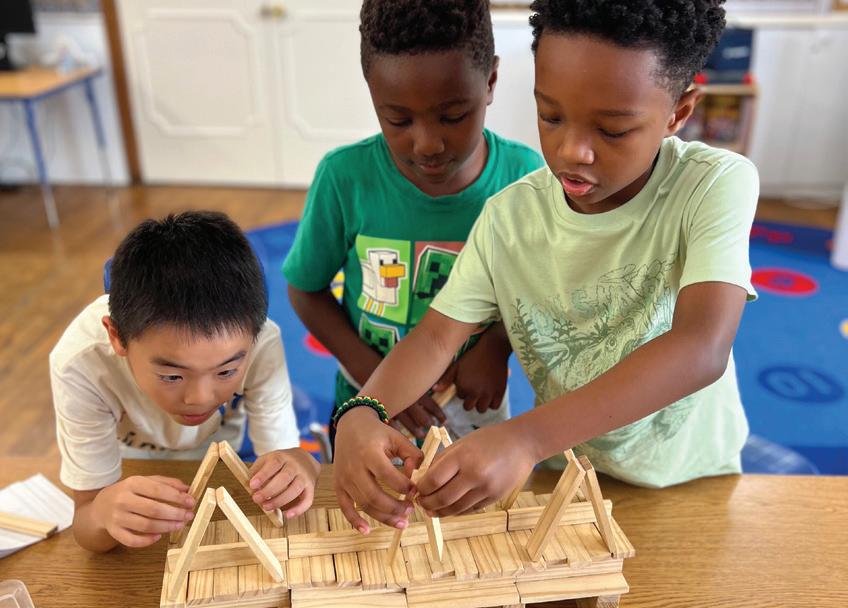
curriculum. We do not just teach children to read—we foster a love for reading,” Marrazzo explains.
Through engaging phonics instruction, personalized lessons, and hand-picked books, students build confidence, curiosity, and lifelong learning habits. “Our goal is for students to master their material—not memorize it—so that they can articulate what they’ve learned and apply that
At Apple Montessori, children are inspired to become kind, independent, confident and curious individuals for a lifetime of happiness and success. Apple’s approach to early childhood education includes programs for children 6 weeks to 12 years, and empowers students to reach their full potential academically, socially and emotionally. Children are encouraged to move and grow at their own pace as teachers use hands-on materials and guide them through individual and group lessons.
The calm, organized classrooms encourage exploration and discovery. Many locations also feature outdoor classrooms to connect children with nature and saltwater swimming pools in the summer. “We look forward to welcoming back families and begin forming relationships with new ones,” says Karyn Cottrell, vice president of operations. “Being able to help build a foundation and love of learning in children— and see them grow throughout the year—is so rewarding and makes everything we do at

understanding to real-life situations,” she says. “Our approach creates selfdetermined and independent students with a love of learning.”
The school also emphasizes community service and a close parent-school partnership to support the whole child. “We have a strong sense of community here, and that extends beyond the walls of our school,” Marrazzo says.

Apple more meaningful.”
Two new NJ locations will be opening in Paramus and Shrewsbury. The school is also introducing a new enrichment program called TinkRworks this fall, which brings science, technology, engineering, art and math (STEAM) to life through engaging, hands-on projects designed to spark curiosity and creativity in young learners.


100 STRAUBE CENTER BLVD., PENNINGTON • 609-730-9553 • THECAMBRIDGESCHOOL.ORG
Since its inception 25 years ago, the Cambridge School has provided students who have language-based learning differences with a high-quality education that’s tailored to their personal strengths and learning styles. The school’s robust educational program provides an individualized yet comprehensive school experience for children who learn differently.
“Our school was founded on the belief that every child deserves the opportunity for an excellent education,” says Assistant Head of School Meghan Peters. Cambridge’s nurturing and individualized learning environment prepares each student with the necessary academic, personal and social skills to succeed.
In small classroom settings, highlytrained faculty provide a comprehensive, evidence-based curriculum designed to help students overcome their unique challenges while supporting their strengths and fostering their passions. “Teachers get

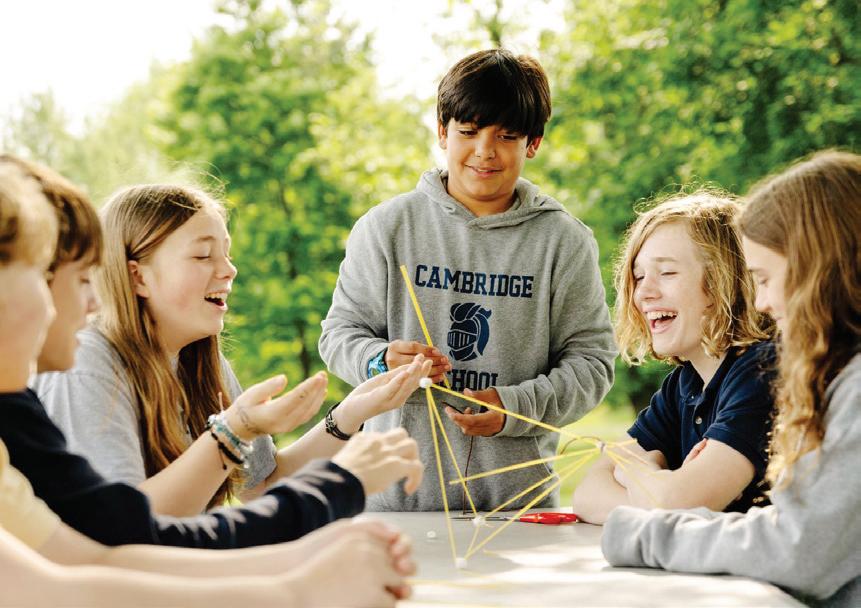
to know each student on a personal level and create individualized schedules and plans to help them achieve their goals,” she says.
Students can take advantage of field trips that bring the curriculum to life, as well as an array of athletic programs, clubs and school-wide community service projects. The school strives to foster a close-knit community and families enjoy numerous
The Center School has served students with learning disabilities since 1971. Most of the school’s 100 students in grades 1-12 are on the autism spectrum, and there’s a transition program for high school graduates up to age 21 who may not be ready to pursue college and want to go to vocational school or enter the workforce.
“This past spring our high school graduating class represented the diversity of our school’s abilities to serve the various needs of our students,” says Executive Director Dr. Ronald Rinaldi. “Four of our eleven graduates are going to college, to include Ohio State, Temple University, and community colleges. Six others are moving into our transition program here at the school to gain work training experience.”
From physical and occupational therapy, counseling and behaviorists, and reading and speech/language therapists, The Center School has everything that a
events throughout the year, from ice cream socials to school-wide assemblies.
“Parents often say that they appreciate the way our school helped their children identify their strengths…and that it feels like they got their child back,” Peters says. “Our students have typically failed in another school setting—and as their confidence grows here at Cambridge, they start to love learning again.”

student with special needs requires to be successful.
Along with an academic curriculum that mirrors that of mainstream schools, students have access to electives like music, art and woodshop as well as afterschool clubs and athletics like soccer and basketball.
There are also trips, concerts, plays and more, as well as an e-sports gaming
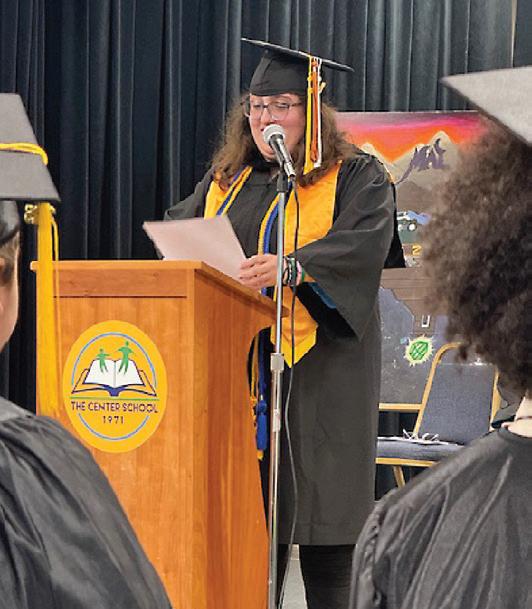
program where students can compete against other schools.
“Many parents don’t realize schools like ours exist and that we offer so many typical school-related opportunities found in district schools,” Rinaldi says. “We combine the traditional with the additional special education-related services these students need to be successful.”
500 VAN EMBURGH AVE., TWP. OF WASHINGTON • 201-445-6800 • IHANJ.COM
An all-female college preparatory high school in the Archdiocese of Newark, Immaculate Heart Academy (IHA) focuses on the complete education of young women by cultivating traditional Christian values while upholding exceptional academic standards. Along with its rigorous academic program, which includes four levels of classes and 24 Advanced Placement courses, IHA develops every aspect of the individual by educating the mind, nurturing the spirit and promoting a healthy lifestyle.
At IHA, women develop independence, confidence and accountability as they pursue opportunities to foster their interests, academic strengths and longterm career objectives. “A strong theme that permeates our curriculum and activities is the development of the special and unique God-given talents that our young women can bring to society,” says Kerry Carroll, principal of IHA.
IHA’s Scholae@theheart Program


enables students to investigate areas for postsecondary education and pursue extracurricular experiences to support their learning, explore potential career goals and capitalize on their strengths and interests. The school also recognizes student achievements through 10 national honor societies and offers more than 70 clubs and 16 athletic programs.
Students regularly put their faith into
Saction by serving their community and ministering to those in need through an array of service opportunities, and the sense of community within the building is unmatched—the IHA sisterhood lasts a lifetime. “Our students graduate IHA as compassionate and empowered young women in control of their futures and prepared for a lifetime of achievements and service to others,” Carroll says.
19 RIVER RD. S., PUTNEY, VT • 802-387-6718 • LANDMARK.EDU
ince 1985, Landmark College (LC) has been revolutionizing education for students with learning differences such as dyslexia, ADHD, autism and executive function challenges in a welcoming, supportive environment.
Students have access to comprehensive supports including advising, executive function coaching and social pragmatics to help them identify the right strategies for their learning profiles. Therapy dogs are available to provide support, companionship and comfort. LC’s unique first-year Perspectives in Learning course encourages students to research and understand their diagnosis to better selfadvocate for their learning needs.
Classes are taught in a number of ways, including visually, auditorily and kinesthetically. There are a wide variety of bachelor and associate degrees to choose from, including new majors in history, health sciences and media arts production
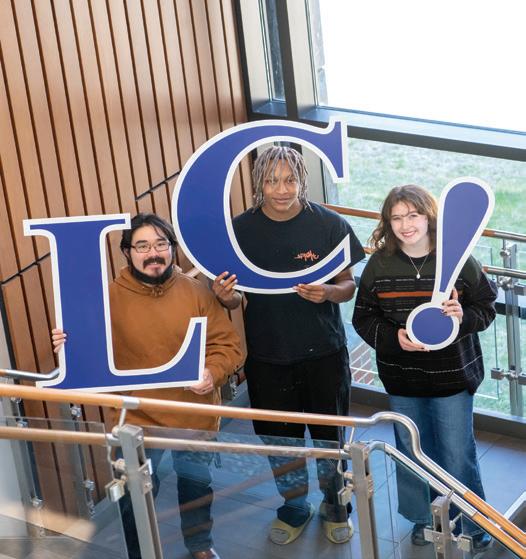

starting this fall. LC also offers two fully online associate degree options, online dual enrollment for high school students and summer programs for both high school and college-age learners.
“We continue to invest in the quality of our student experience and remain laser-focused on the unique needs of the students we serve,” says VP for Enrollment Management Michael Stefanowicz.
Additionally, LC works with employers worldwide to support neurodivergent students in becoming career-ready and building connections. “We focus on connecting student interests with exciting internship and employment opportunities,” Stefanowicz says.
“Companies are actively seeking out students like ours because they see the value in recruiting a workforce that approaches problems in different ways.”
LOCATIONS IN EDISON / LIVINGSTON / PRINCETON • 617-453-9060 • MATHSCHOOL.COM
The Russian School of Mathematics (RSM) is an award-winning afterschool math enrichment program with more than 75 locations serving 90,000 students across North America. Trusted by parents for more than 25 years, RSM uses the rigorous study of mathematics as a vehicle to develop students’ math fluency, intellect and character in order to empower them for life.
“Our school’s K-12 curriculum harnesses a child’s natural inclinations and thinking patterns to ensure they remain engaged, challenged and growing throughout each lesson,” says Regional Director Sona Antonyan. “Our students are extremely hard workers with a thirst for knowledge.”
In addition to their core programs, the schools offer math competition preparation classes that are designed for students interested in advanced mathematical topics and eager to prepare for elite regional, national and

international contests.
RSM’s curriculum was developed by a team of academic professionals specializing in mathematics, education and child development, and is continually being perfected by an internal curriculum department. Along with an after-school math enrichment program, RSM also offers summer classes for students looking to reinforce their math skills and

Aprevent summer learning loss.
RSM is dedicated to fostering connections within its Edison, Livingston and Princeton locations and connecting with the greater New Jersey community. “We host internal events at our schools to allow students to build relationships, as well as participate in events in local towns to share our passion for math with the New Jersey community,” Antonyan says.
147 CHESTNUT RIDGE RD., SADDLE RIVER • 201-327-4050 • SADDLERIVERDAY.ORG
sk Saddle River Day School
Director of Admissions Geoffrey Bowman how he sees his students and these words are top of mind: Innovators. Thinkers. Leaders. The school “empowers students with the tools, space and encouragement to find their passions and thrive,” Bowman says. “The result? Graduates who own their future.”
SRDS was founded in 1957 and offers a Lower School (Pre-K3 to grade 4), a Middle School (grades 5-8) and an Upper School (grades 9-12). Bowman says the school differentiates itself by balancing the familiarity of a small school with the programmatic slate of a big one. “Families love SRDS because of our rigorous academic program and because of our warm and caring community,” he adds. “We live our core values of Everyone Counts, Love of Learning and Intellectual Risk-Taking.”
In recent years, the school has launched a number of new programs and initiatives such as the Upper School honors research


program (Gateway Diplomas) allowing seniors the opportunity to differentiate themselves in the college application process, a year-long Capstone Research Project for middle schoolers and an entrepreneurship program for Lower School students. The school will be opening a new 30,000+-square-foot science and entrepreneurship center in Fall 2026. Education here focuses on “cultivating
an entrepreneurial mindset” with the school’s Center for Innovation and Entrepreneurship offering programs in business, graphic arts, videography, engineering and computer science. In addition, AP and honors courses are taught in grades 8-12 for qualified students in addition to 30 no-cut sports teams, clubs and musical/theater groups as well as many extracurricular activities for all ages.
1295 INMAN AVE., EDISON • 908-754-1882 • WHSCHOOL.ORG
Academic rigor, athletics and the visual and performing arts are all hallmarks of The Wardlaw+Hartridge School—but above all, the school is known for educating the whole child. Founded in 1976 as a merger of two schools with roots tracing back to the late 1800s, the school has evolved into a co-educational, college preparatory day school serving students in pre-K through high school in three divisions.
The school’s small class sizes allow educators to make personal connections with each student. “We say that our teachers are ‘not the sage on the stage but the guide on the side,’ and we take immense pride that no student gets lost here,” says Director of Enrollment Management Gerard Gonnella. “Our students aren’t here to memorize facts— they’re here to engage in active learning.”
Wardlaw+Hartridge is proud of its 100 percent matriculation to top-tier

colleges and universities. “Our students know that when they sit down at the lunch table that they might be dining with kids from China, India, Singapore, Westfield or Scotch Plains—and they appreciate working collaboratively with students who have different traditions and backgrounds,” he says. “We equip students with important skills like critical thinking and problem solving, as well as
The Willow School empowers students to better understand the world and make a difference. At Willow, students learn joyfully, care for the natural world, and practice core values that inform every part of the school’s preschool through eighth grade curriculum and community.
The interweaving of ethics into all aspects of student life and a commitment to sustainability sets Willow apart. “Parents value our ability to provide a rigorous, experiential curriculum—one that reflects our deep commitment to outdoor education, fosters meaningful connections with the natural world, and weaves a deeply integrated and meaningful virtues program into every aspect of learning,” says Head of School Francisco Ayala.
“Willow virtues—like respect, responsibility, and honesty—form a shared language and ethos that help us collectively raise ethical children with a deep sense of purpose,” Ayala says.
Students, parents, and faculty work


the ability to debate or accept criticism.”
The school’s state-of-the-art facilities include an indoor pool, fitness center, two artificial turf fields and a performing arts center. Nearly all students regularly perform community service.
“We’re committed to teaching students to have the courage and character to shape the future of our world,” Gonnella says.

together to fulfill the school’s mission as a close-knit community. Morning gatherings, community lunches, and service-learning build ethical character and civic engagement.
Students in all grades learn through cross-curricular, project-based work with their classmates. In the lower school, students begin accelerated math studies and STEM work. In middle
school, students take on leadership roles throughout the community including public speaking, experiential learning opportunities, and capstone projects.
“Our mission is to graduate students who are curious, critical thinkers, that will use these skills and their deep ethical foundation to be positive change-makers,” Ayala says.
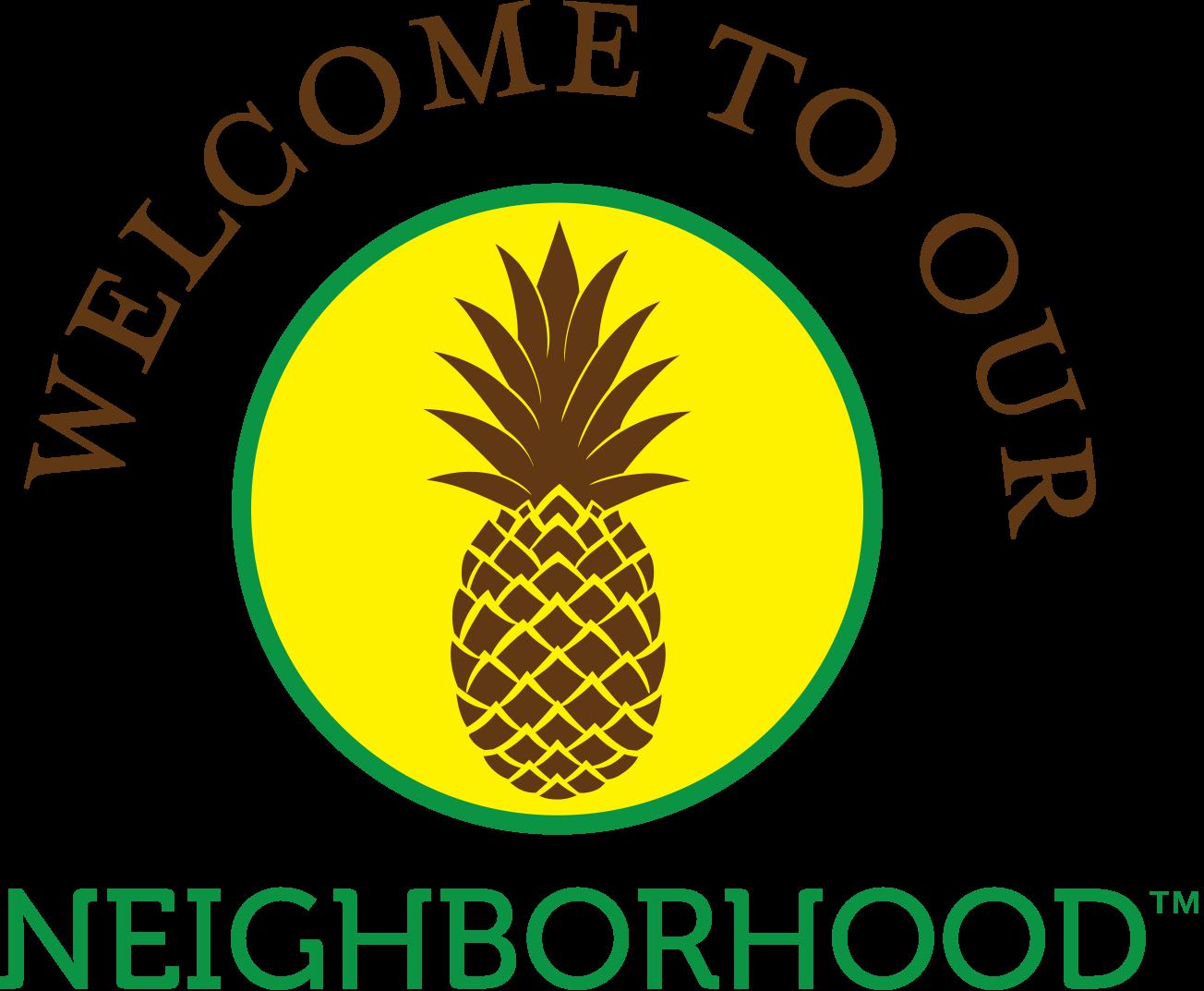





Expert advice to help your kid cope with academic pressure

By ARRICCA ELIN SANSONE
As a new school year begins, kids often find plenty to stress about: the ever-present need to fit in, body image issues, and unpredictable hormones all add to the mix. There’s also pressure to achieve—whether it’s in academics or sports—which can take a toll on kids’ mental health.
With all of these factors playing a part, it’s no wonder many kids feel overwhelmed. “Kids now are carrying a lot more pressure than we did as children,” says Stephanie Marcello, PhD, chief psychologist at Rutgers Health University Behavioral Health Care, which has multiple locations throughout New Jersey. “The data points to social media and technology in general as contributing. We all have access to what’s going on globally in world events. There’s also cyberbullying, and kids compare themselves to what they see on social media but don’t have the ability to tell what’s real or not.”
It’s important to understand that not all of the worry or anxiety that kids experience is negative. “A little bit of stress in all of our lives is good. Stress helps us accomplish our goals,” says Richard Selznick, PhD, director of Cooper Learning Center at Cooper University Health Care in Voorhees Twp., and author of The Shut-Down Learner. “You also can help kids by tuning into your own feelings, learning how to dial it down, and showing kids how you handle your own stress.”
Here’s how to help your kid set up healthy habits for managing stress:
No one functions well on lack of sleep. Keep set bedtimes,
and limit access to technology before bed. “Having limits and boundaries in the house so that they’re not texting when you think they’re asleep is important,” says Marcello. About an hour before bed, put phones in a central charging station (yours, too!).
We often think we can build our kids’ confidence with praise. But while it’s tempting to tell your kid “you’re smart” if he or she is dealing with academic challenges, that’s not necessarily helpful, says Selznick. Instead, a child who’s struggling with math, for example, may benefit from taking the focus off deficits and emphasizing that he or she has other strengths, such as reading or science. You also can also seek tangible ways to help, such as getting a tutor.
Kids learn far more from watching us than from hearing us preach to them about what to do. “That doesn’t mean we need to be perfect,” says Marcello. “We’re all allowed to be human.” But one technique for modeling positive behavior is speaking out loud. For example, say something like, “I didn’t exercise last week, so I’m going to make sure I go for a walk today.” This can show your child that although you didn’t accomplish what you wanted last week, you can get back on track this week.
If your child seems to be struggling academically with fundamental skills—no matter at what age—delve into the

“IF WE DO EVERYTHING FOR THEM, WE SEND A MESSAGE THAT ‘YOU CAN’T DO THIS BY YOURSELF.’”
“IT’S ALSO OKAY TO TELL YOUR KID THAT IF THEY DON’T WANT TO TALK TO YOU, THERE ARE OTHER TRUSTED ADULTS THEY CAN GO TO.”

situation to find the help they need. Don’t assume your kid is just lazy. “If a child’s foundation is weak, they’re going to find it more and more difficult as they head into high school,” says Selznick. “Maybe they have a learning disability that has never been identified, which creates stress throughout their academic careers.”
Nothing should be off-limits to discuss. “That means having an honest and developmentally-appropriate discussion with kids. If a grandparent is sick, for example, you don’t lie to them about it,” says Marcello. “It’s also okay to tell your kid that if they don’t want to talk to you, there are other trusted adults they can go to.”
Kids need to understand that a person may appear to have an idyllic life on social media but the reality may be different. Be sure to talk to them about social media and phones and set rules around their use. “Phones aren’t going away so we need to teach kids how to use them constructively,” says Marcello.
Parents often want to solve everything for their kids, but that doesn’t teach them to figure things out on their own. Resist the urge to dash off a note to the teacher or call the school if your child has an issue. “If we do everything for them, we send a
message that ‘you can’t do this by yourself,’” says Marcello. “Kids must be given opportunities to fail.”
Eating meals together (even if it’s takeout because you didn’t have time to cook), shooting some hoops after dinner, or having regular family movie nights are important ways of nurturing your family connection. It’s also useful to provide kids with tools for stress management, whether it’s breathing exercises or mindfulness apps such as Calm, says Marcello.
Being short-tempered, failing to turn in their homework or suddenly not wanting to socialize often are signs your child isn’t handling stress well. Sometimes stress shows itself in physical symptoms, especially in younger kids. Pay attention if your child starts complaining about stomach aches or headaches. “It’s a lot more common that they’ll complain about not feeling well instead of saying they feel overwhelmed,” says Marcello.
You know your kid better than anyone, so trust your gut if you think your child isn’t advancing academically as they should be, says Selznick. Ditto for stress levels: some kids are anxious by nature and can benefit from cognitive behavioral therapy. Talk to your child’s pediatrician for resources for counseling, or check with your company’s HR department, which may offer an Employee Assistance Program (EAP) that may include a number of counseling hours for free.














By NAYDA RONDON

Pros weigh in on the upsides of downtime for kids

As parents, we often treat “busyness” as a badge of honor—proof that we’re productive, successful and prioritize enriching our kids. We want them to have opportunities we might not have enjoyed ourselves. But in trying to give them a wealth of options, we actually may be doing more harm than good.
Instead of being happy and engaged, overscheduled kids can wind up feeling overwhelmed, anxious and wiped out, says Paramus-based psychotherapist Lauren Bradley. “They may complain of stomach aches or headaches, or seem withdrawn or less interested in things they used to enjoy,” she says.
Other signs, according to experts, include moodiness, exhaustion, apathy, feelings of inadequacy, and “slacker” guilt that they’re not doing enough; in extreme situations it can present as tantrums or aggression.
Kids’ minds and bodies need downtime to recharge. Research from organizations like the National Institutes of Health and World Health Organization suggest that free time—structured and unstructured—offers numerous physical, mental, emotional and cognitive development benefits.
“It’s vital for a child’s mental health that they learn how to relax, plan out and organize their own time and self-regulate. Some free time is important to enhance family connections and reduce burnout,” says Tracey Waldman, PhD, clinical director of Paramus-based Family Psychiatry and Therapy.
So next time you hear “I’m bored,” keep in mind that a little boredom is actually healthy for kids. Without constant stimulation, they’re likelier to tap into their imaginations, coming

up with creative ways to entertain themselves.
Additionally, studies indicate that downtime lets kids: hone their self-reliance, self-confidence and independence. explore new interests and abilities without fear of failure or judgment.
process and better retain what they learn in school and during extracurricular activities.
develop problem-solving and decision-making skills. work on “soft” skills like communication, socialization and conflict resolution.
Tune in to your child’s cues. Sometimes parents fill their kids’ schedules with activities they enjoy themselves. But your love of tennis might not be shared by your child. To ensure their downtime is spent in ways that are manageable and fun for them, talk to them about what they really want—and don’t want—to do, Dr. Waldman advises. Respecting their preferences will help create space for the low-key, unscheduled moments your child needs for rest and creative exploration. Know your child’s limits—and yours. Every child is different, and their threshold for how much free time they need will be too, notes clinical psychologist Joseph Galasso, PsyD, of Franklin Lakes-based Baker Street Behavioral Health. Some kids are outgoing and thrive on play and social time; others, more socially anxious, require more quiet or active regulation. Pay attention to how much downtime your child can comfortably handle, and step in with support when needed.
Parents also face challenges. Feeling like the scheduler-inchief by juggling work, packed schedules, and driving to and


from kids’ activities can be exhausting, and it’s natural to want a breather of your own. Rather than constantly struggling to fit kids into their adults’ routines, Dr. Galasso suggests parents occasionally join their children’s playtime as a way for the entire family to de-stress and connect.
Find a healthy balance. On one hand, loading your kids’ schedules with activities can leave them—and you—feeling burned out. On the flip side, kids also need chances to grow through experiences like playing sports, participating in the arts or volunteering. These activities help them learn empathy, build friendships and understand the value of giving back. As Joanne Thomas, a retired Bergenfield teacher, puts it: “While it’s important not to over-structure your child’s time, being engaged and active is great for nurturing well-rounded kids.” The key is in finding that sweet spot: enough activity to challenge and inspire your child, but not so much that they lose their spark. Offer age-appropriate support. Some guidance makes younger kids feel safe and secure while still fostering independence. Teens demand more freedom, but even if they don’t admit it, they also appreciate knowing they have parental backup. Bradley elaborates: “Giving teens freedom is really important, but checking in periodically—without hovering— lets them explore while also feeling supported and connected. They’re under a lot of pressure from school, sports and social media, and sometimes just need permission to slow down without feeling like they’re ‘falling behind.’”
Establish realistic play rules. Jerusha Hull, LCSW/PMH-C, a maternal mental health specialist at Manasquan-based Virtue Counseling, encourages parents to ask themselves if they’re setting reasonable expectations and whether their household
rules encourage or limit their child’s play. “Creative playtime often comes with some messiness, so identifying what that looks like in your home benefits everyone. For example, instead of ‘no paint in the house,’ try ‘you can paint at the kitchen table,’” she explains.
Be proactive. Encourage kids to find something to do, but stay ahead of the game by developing a list of activities they may enjoy, says Teresa Shaw, a retired teacher from Jefferson.
Here are some more tips to promote downtime: Block off weekly “nothing planned” time on the family calendar.
Designate a quiet, screen-free zone for reading, doodling or just chilling.
Have plenty of indoor and outdoor play “tools” available (a creativity box of crafting materials, painting and drawing supplies, a sandbox, games, etc.).
Let your child choose one extracurricular to pause if they’re feeling overwhelmed.
Emphasize self-care by modeling rest and engaging in leisuretime activities of your own.
Rethink your mindset. Many of us grew up thinking we have to “earn” our downtime, that we only deserve to relax and have fun after we’ve been productive. But as Hull emphasizes, it’s critical to unlearn the idea that being busy all the time is what makes us valuable. Instead, we need to start believing—and teaching our kids—that we’re worthy just by being ourselves, not because of what we do. Such an attitude adjustment might take some time and effort, but it’s well worth it.
—Nayda Rondon is a lifestyle and parenting writer based in New Jersey.

Help your child with ADHD thrive during the school year
By ARRICCA ELIN SANSONE
Anew school year can be overwhelming for any student, but for kids with ADHD, preparation is especially important.
A thoughtful plan now can make the difference between constant catch-up and a confident start. One of the first things you should do is make an appointment with your child’s school. “If possible, try to do this before the year starts,” says Chanel V. Thompson-Rogers, MD, assistant professor of pediatrics at Rutgers Health New Jersey Medical School in Newark. “You need to discuss what you know to be your child’s challenges and strengths so that you can work together to help your child be successful in the classroom.”
If this is new to you, make sure your child’s doctor submits a letter to the school to indicate your child has been diagnosed with ADHD so that he or she can receive adjustments, or accommodations, under a 504 plan. “In theory, this gives the child basic accommodations to level the playing field for learning,” says Richard Selznick, PhD, director of Cooper Learning Center at Cooper University Health Care in Voorhees Twp., and author of The Shut-Down Learner. “The plan can include modifications such as having an inattentive child sit at the front of the classroom or receive extra time on tests and assignments.”
An Individualized Education Program (IEP) is another tool that allows your child to receive additional support if they are determined to be eligible. This program offers kids specialized instruction, such as in small groups, to help the child learn. IEPs should be reevaluated annually, though you can reach out to the school any time you have a concern, says Dr. Thompson-Rogers.
Here’s what else you can to do start the school year off on the right foot:
PRIORITIZE A HEALTHY LIFESTYLE. Make sure kids are getting to bed on time, eating breakfast before school, and getting outdoors to play and exercise every day. “We know activity is important, but it’s especially important for kids with ADHD,” says Dr. ThompsonRogers. “These kids have lots of energy they need to get out.” Good nutrition also plays a part: Ditch the processed and high-fat foods and caffeine. “These all can sway mood in any child, but there can be a snowball effect in kids with ADHD,” she says.
STICK TO A SCHEDULE. “Routines are very helpful because kids know they’ll be doing the same things at the same time every day, which feels reassuring to them,” says Dr. Thompson-Rogers. For example, establish a bedtime ritual: Two hours before bed, electronics are turned off. Then a bath or shower, followed by snuggling or reading a book or whatever other relaxing (non-digital) activities appeal to your kid to wind down. The idea is to follow the same sequence of events every night.
PROVIDE STRUCTURE. “For kids with ADHD, when things are not organized, their day falls apart for them,” says Dr. ThompsonRogers. Get organized the night before so it’s not a wild scramble the next morning. For example, pack lunches and backpacks,
choose clothes, and set out dishes and flatware for breakfast. Keep a landing place right by the door where everyone (you, too!) can grab what they need as they head out in the morning.
USE VISUAL CUES. Kids with ADHD often benefit from having something they can see to guide their activities. Little kids may find color-coded labels on folders helpful, with one color for math, another for writing. Older kids can use a daily planner, even one that’s digital. Charts, such as a large whiteboard with dates and appointments, also can be useful. “These types of tools allow kids to function more independently,” says Dr. Thompson-Rogers.
TEACH KIDS RELAXATION STRATEGIES. Techniques such as meditation, yoga, stretching or deep breathing exercises can help kids chill out. “These tools give kids a strategy to sit down and refocus themselves,” says Dr. Thompson-Rogers.
GET YOUR KID EXTRA SUPPORT, IF NECESSARY. Some kids may benefit from executive function coaching, says Dr. ThompsonRogers. A trained mental health professional helps your child learn new behaviors and habits to work on memory, task and time management and other executive functions. Check with your insurance company for coverage.
DON’T OVERSCHEDULE YOUR KID. Sports and activities can be a positive part of your child’s life but sometimes being overscheduled is not productive. Kids (and you!) need downtime, too. “Let kids do other stuff, and just be kids,” says Dr. Selznick.
DEVELOP A RELATIONSHIP WITH YOUR CHILD’S TEACHER. Check in periodically. “It’s not about overwhelming the teacher with complicated instructions but about keeping things front and center in the teacher’s mind,” says Dr. Selznick. Choose two or three key things that you know will be most helpful for your child, such as having the teacher repeat instructions or giving your child more time for some tasks. Then reinforce these with the teacher.
TALK TO YOUR CHILD’S DOCTOR ABOUT MEDICATION. It’s worth considering for some kids, but understand that it’s not a magic potion that solves all your child’s challenges. “Some kids do benefit from medication because it helps them focus, and medications can be a partial answer, but that doesn’t address reading skills or social issues,” says Dr. Selznick. Consider medications as a potential tool, but don’t assume every child should be on them or that they solve everything.
MANAGE YOUR OWN STRESS. It’s easy to get frazzled when you’re juggling life and your child’s ADHD challenges. But don’t forget that every child has strengths, too. When you start to feel overwhelmed, step back and dial it down because kids pick up on that, says Dr. Selznick. When you’re more relaxed, they will be, too.






ALICE PAUL INSTITUTE
128 Hooton Rd., Mount Laurel 856-231-1885
alicepaul.org
Named after NJ-born suffragist Alice Paul, the institute offers opportunities to learn about how she dedicated her life to gender equality initiatives through K-8 programs, teen education, a Girls Leadership Council and community endeavors.
ALLEY POND ENVIRONMENTAL CENTER
229-10 Northern Blvd., Douglaston, NY 718-229-4000
alleypond.org
Explore nature with a walk outside, spend time with animals and take a lesson on topics ranging from endangered species to animal adaptations.
AMERICAN MUSEUM OF NATURAL HISTORY
200 Central Park W., NYC 212-769-5100
amnh.org
Learn about everything from dinos to outer space. Now open is Encounters in the Milky Way, a new stegosaurus fossil named Apex, and the Life at the Limits and Invisible Worlds exhibits.
AMERICA’S GROW-A-ROW
150 Pittstown Rd., Pittstown 908-662-6304
americasgrowarow.org
Lessons offer education on nutrition, culinary skills and the importance of volunteering, since the mission is to end hunger using fresh produce.
BATTLESHIP NEW JERSEY
62 Battleship Pl., Camden 856-966-1652 battleshipnewjersey.org
Walk through the sailors’ quarters, administrative offices, mess hall, commissary
ADVENTURE AQUARIUM
1 Riverside Dr., Camden 844-474-3474 • adventureaquarium.com
The aquarium is home to more than 15,000 aquatic animals, including the largest collection of sharks in the Northeast. Take a walk through the shark tunnel, and see hippos up close. The brand-new Kaleidoscope Cove dedicates an area to bioluminescent sea creatures.
CAPE MAY POINT
303 Rte. 629, Cape May 609-884-2159
capemay.com
You can’t miss the giant lighthouse, which is 157.5 feet (or 199 steps) from the base to an all-around view of the southernmost area of New Jersey. Head down to the Nature Center, which is a small aquarium-meets-museum; wooden walkways to the beach; and World War II bunkers.
and even the jail aboard the decommissioned U.S. Navy ship docked in the Delaware River.
BAYSHORE CENTER AT BIVALVE
2800 High St., Port Norris
856-785-2060
bayshorecenter.org
When you arrive, look for the A.J. Meerwald, a former oyster schooner that now serves as a hands-on sailing classroom. The Delaware Bay Museum offers shore-based programs on campus and along the scenic Maurice River.
BIG BROOK PARK
Main Entrance: 521 Rte. 520, Marlboro Activity Center: 80 Boundary Rd., Marlboro 732-842-4000, ext. 4312 monmouthcountyparks.com
The rolling hills and open meadows attract families who want to hike, cycle or look for wildlife. The real attraction is fossil collecting in Big Brook, where you can hunt for prehistoric treasures.
BRONX ZOO
2300 Southern Blvd., Bronx, NY
718-220-5100 bronxzoo.com
Listen to the roar of tigers, watch red pandas from the monorail and see dozens of butterflies in the greenhouse. Dinosaur Safari is back. The new World of Darkness exhibit focuses on animals that thrive in darkness.
BROOKLYN BOTANIC GARDEN
990 Washington Ave., Brooklyn, NY
718-623-7220
bbg.org
Make sensory observations, discover plant adaptations and learn about tree diversity while exploring gardens filled with multicolored flowers. Bonsai collections are also on display this fall.
CENTENARY STAGE COMPANY
715 Grand Ave., Hackettstown 908-979-0900
centenarystageco.org
Kids can watch a variety of professional theater performances, live music and dance events. If they feel inspired, they can join the touring company or take a Young Performers workshop.
CHARLES J. MUTH MUSEUM
Hinchliffe Stadium, 186 Maple St., Paterson thehinchliffestadium.com/museum
The stadium where the New Jersey Jackals play is one of the country’s last remaining Negro League ballparks. Inside the museum, learn about Paterson’s Larry Doby, who was the first Black player in the American League; walk through exhibits of baseball artifacts; and watch a documentary inside the mini theater.
CIRCLE LINE SIGHTSEEING CRUISES
Pier 83, W. 42nd St., NYC 212-563-3200 circleline.com
From the outdoor deck you’ll have unmatched views of NYC’s landmarks. Sail toward the Statue of Liberty and see the best of the skyline.
COOPER GRISTMILL
66 Rte. 24, Chester Twp. 908-879-5463 morrisparks.net
Nathan Cooper built this gristmill in 1826, and it’s one of the only remaining restored waterpowered mills in NJ. During a 45-minute tour led by a costumed master miller, you’ll see the machinery run in action.
DA VINCI SCIENCE CENTER
PPL Pavilion, 815 W. Hamilton St., Allentown, PA









610-841-1875
davincisciencecenter.org
A Mickey Mouse Clubhouse exhibit is coming in September, which joins kids’ favorites like My Body, Curiosity Hall, Science in the Making, and live animal encounters (like the adorable American river otters).
244 Werimus Rd., Hillsdale 201-666-0472
demarestfarms.com
If you’ve got a school group of 20 or more, make a weekday reservation starting September 22 to pick your own pumpkins. Go on a hayride, visit the petting zoo, hang out in the play area, and try some apple cider and donuts.
Multiple locations
917-375-4248 dinosaursrock.com
The museum comes to you whether at a school, camp, library, or your kid’s birthday party with info on dinosaurs, oceans, sharks, gems, rocks, minerals and insects that amaze your child via assemblies, school events and parties.
THE DISCOVERY CENTER AT POINT BREEZE
101 Park St., Bordentown 609-924-4646
drgreenway.org
The 200-year-old house-turned-museum is

FIELD STATION: DINOSAURS
3 Overpeck Park Dwy., Leonia 855-999-9010 • jerseydinos.com
This is the final season kids can explore the outdoor prehistoric theme park and its 30 life-sized, moving dinosaurs. They can join a dino dance party, play in the Jurassic Zoo Bounce House and be part of the T-Rex Feeding Frenzy. The last day is November 9.
located on land that was occupied by Lenape tribe members for thousands of years. Joseph Napoleon Bonaparte, the exiled King of Spain, took residence in the 1880s. On site, there are archaeological displays, and 27 heritage crops that were grown by the earliest settlers.
1 American Dream Way, East Rutherford 833-263-7326
skyviewsobservationwheels.com
It may look like a Ferris wheel, but it’s actually an observation wheel with views of the New York City skyline.
1112 Dukes Parkway W., Hillsborough 908-722-3700
dukefarms.org/field-trips
Considered a “living lab” among 2,700 acres in Somerset County, interactive nature activities include birding, outdoor classrooms and field journaling. Schedule a field trip with an instructor, or take a self-guided tour for free.
EDELMAN FOSSIL PARK & MUSEUM
66 Million Mosasaur Dr., Mantua Twp. 856-284-DINO (3466)
efm.org
Get your prehistoric fix here, digging for real New Jersey-based fossils outside in the quarry or climbing on a pteranodon-shaped playground. Inside, explore exhibits like dino and marine animal replicas, the Discovery Forest play area for kids and school groups, and a virtual reality game.
FOSTERFIELDS LIVING HISTORICAL FARM
73 Kahdena Rd., Morris Twp.
973-326-7645
morrisparks.net
Kids can experience life as it was in the 1920s when Cara Foster—whose father, Charles, purchased the land in 1881—ran the farm. They’ll collect eggs, ride wagons around the farm and see antique automobiles.
FRANKLIN MINERAL MUSEUM
32 Evans St., Franklin 973-827-3481
franklinmineralmuseum.org
Kids will learn about the history of mineralogy by participating in rock collecting and viewing minerals and artifacts. Exhibits include the Fluorescent Room, featuring a 32-foot-long display of fluorescent minerals; and the American Indian Room, which has Native American tools.
GREAT SWAMP WATERSHED ASSOCIATION
568 Tempe Wick Rd., Morristown 973-538-3500
greatswamp.org
High schoolers can learn about water quality monitoring or explore terrestrial ecology and wetlands hydrology, while younger kids can search for macroinvertebrates in a local body of water or do a pond dip to identify aquatic inhabitants.
GROWING STAGE
7 Ledgewood Ave., Netcong 973-347-4946
growingstage.com/classroom-resources
Part of The Children’s Theatre of New Jersey inside The Historic Palace Theatre, kids on a field trip can watch a matinee performance of the show from the main stage. There are Q&As with the artistic team members, plus activity guides for all students.
HEALTHBARN USA
The Barn, 1057 Hillcrest Rd., Ridgewood And on-site school programs 201-444-2955
healthbarnusa.com
At The Barn, scouts ages 5-12 will learn why it’s important to eat natural, fresh foods through composting, making smoothies, planting veggies and playing a food IQ game. School assembly topics include You’ll Like It and Super Salad Bar. Nutrition and science workshops, and afterschool enrichment programs, are also offered.
HIDDEN BROOK RANCH ALPACA AND LLAMA FARM
196 State Park Rd., Blairstown 908-543-4808
hiddenbrookranchalpaca.com
The owners love to share their knowledge of the small herd that lives on 10 acres at the foot of Jenny Jump State Park. Call for an appointment.
HISTORIC LONGSTREET FARM
44 Longstreet Rd., Holmdel 732-946-3758
monmouthcountyparks.com
Tour the farmhouse, milk a cow, play games from the Victorian period, shear sheep, and use a wood stove for cooking. Get an up-close look into Dutch building traditions at the HolmesHendrickson House Museum, built back in 1754.
THE HISTORIC VILLAGE AT ALLAIRE 4263 Atlantic Ave., Farmingdale 732-919-3500
allairevillage.org
This former factory town is a living history experience where kids can get a glimpse of life during the 19th century. Historic interpreters dressed in period garb give tours and put on demos about life pre-electricity.
HOLLAND RIDGE FARMS
108 Rues Rd., Cream Ridge 855-363-2843 (text)
hollandridgefarms.com
This spectacular springtime tulip farm puts on a gorgeous flower festival filled with sunflowers, kids’ activities and photo ops in the fall. Field trip activities include riding the hayride, feeding farm animals, learning about the family farm and the flower planting process, and taking a tour of the onsite Dutch windmill.
HOWELL LIVING HISTORY FARM
70 Woodens Ln., Hopewell Twp.
609-737-3299
howellfarm.org
Trips to this farm from the 1700s include handson experiences that engage kids in the chores of a working farm. They’ll be taught about the food and the work that animals provide.
INDIAN ACRES TREE FARM
111 Tuckerton Rd., Medford 609-953-0087
indianacrestreefarm.com/school-tours
Fall tours offer a wagon ride through the natural woodlands and Christmas tree fields of the 151acre preserved farm. Pick your pumpkin at Betty’s Patch, and take a photo inside the giant inflatable pumpkin. Leave time for the play area, too.
INFOAGE SCIENCE & HISTORY MUSEUMS
2201 Marconi Rd., Wall Twp. 732-280-3000
infoage.org
Explore more than two dozen museums and exhibits where you can learn about space exploration, electronic warfare, radio technology, military communications, World War II artifacts, computers, the Lenni-Lenape tribe and more.
INTREPID MUSEUM
Pier 86, W. 46th St. and 12th Ave., NYC 877-957-7447
intrepidmuseum.org
Visitors to the legendary aircraft carrier will see the Space Shuttle Pavilion, where they’ll get a closeup look at a retired NASA space shuttle, a former military submarine kids can walk through, and the interactive Exploreum.
IRON PEAK SPORTS & EVENTS
137 Mountain View Rd., Hillsborough 908-758-2739, ext. 3352
ironpeakse.com
Whether the kids like soccer, lacrosse, football, basketball, volleyball or baseball, there’s an activity for them at this indoor and outdoor sports complex. There are also climbing walls, field games, an arcade, duckpin bowling and aerial ropes.
LIBERTY SCIENCE CENTER
222 Jersey City Blvd., Jersey City 201-200-1000 • lsc.org
The kids will get hands-on experience with electricity, bounce around an Infinity Climber, crawl through the Touch Tunnel and see a show in the biggest planetarium in the western hemisphere. The new Titanic exhibit will engage adults, while kids will giggle learning about farts and burps at Grossology.
JENKINSON’S AQUARIUM
300 Ocean Ave., Pt. Pleasant Beach
732-892-0600 • jenkinsons.com/aquarium
Aside from seeing the awesome aquatic animals, kids can join the Junior Keepers, Aquatic Adventures or various science programs.
JOHNSON’S LOCUST HALL FARM
2691 Monmouth Rd., Jobstown
609-353-9000
johnsonslocusthallfarm.com/school-field-trips
The preserved farm from the 17th century offers The Farm Field Trip Experience during spring, summer and fall, where kids jump on a hayride, pick the crops of the season, feed the animals, and have lunch in the picnic area.
LAKOTA WOLF PRESERVE
89 Mt. Pleasant Rd., Columbia 908-496-9244
lakotawolf.com
Take a Wolf Watch tour or sign up for a photography session to see majestic wolves, bobcats, lynxes and foxes at play inside the largest natural-habitat animal preserve in the Northeast.
LIBERTY HALL MUSEUM
1003 Morris Ave., Union 908-527-0400
libertyhall.kean.edu
This 50-room mansion offers a hands-on look into the daily life of a colonial child of the 1700s through their toys, school, games, folktales, nature adventures and chores.
MAD SCIENCE
Multiple locations
609-737-0313
wnj.madscience.org/schools-specialevents
Mad Scientists keep kids ages 3-12 interested in a variety of topics about how the world works through school assemblies, science shows and fun stations.
MACCULLOCH HALL HISTORICAL MUSEUM
45 Macculloch Ave., Morristown 973-538-2404
maccullochhall.org
Programs vary by age, and include touring the historic garden, kitchen and drawing room; getting the scoop on composting; going on a garden scavenger hunt; hearing details about the Morris

MANASQUAN RESERVOIR
Visitor Center: 311 Windeler Rd., Howell 732-919-0996
Environmental Center: 331 Georgia Tavern Rd., Howell
monmouthcountyparks.com
Inside the Environmental Center you’ll find activities for kids, plus live animals like turtles and snakes. Outside, take a hike, rent a kayak or rowboat, or spend time at the playground.
MEDIEVAL TIMES
149 Polito Ave., Lyndhurst 201-933-2220
medievaltimes.com
Be a guest of the Queen at this royal banquet. The castle is home to knights, falcons and horses who’ll put on a show complete with hand-to-hand combat and jousting. Take a look at medieval weaponry in the Hall of Arms.
MONMOUTH COUNTY PARK SYSTEM
Multiple locations monmouthcountyparks.com
Group programs include live animal presentations, nature walks, eco-adventures, freshwater ecology and marine life. Visit Historic Walnford for 19th-century learning, or Longstreet Farm to meet the animals.
MONMOUTH MUSEUM
765 Newman Springs Rd., Lincroft 732-747-2266
monmouthmuseum.org
Different wings include a play space where kids can board a pirate ship or climb the Sandy Hook
GROUNDS FOR SCULPTURE
80 Sculptors Way, Hamilton 609-586-0616 groundsforsculpture.org
More than a garden, this beautiful spot boasts more than 270 sculptures across 42 acres. Sign up for a Tots for Sculpture class, or Family Open Studio days on the first Saturday of the month.

Lighthouse; learn about STEAM concepts through fossils, a paleo lab and recycled arts; check out space gear; and see pollinators in the gardens.
MONTCLAIR ART MUSEUM
3 S. Mountain Ave., Montclair 973-746-5555
montclairartmuseum.org
There are more than 14,000 paintings, ceramics, basketry, sculptures, beadwork and works on paper you can explore. Interactive field trips support students in creating art tailored to their interests.
MORRIS COUNTY PARK COMMISSION
Various locations morrisparks.net
If your kid loves nature and the environment, they can visit sites like the Cooper Gristmill, Fosterfields Living Historical Farm, Great Swamp Outdoor Education Center or the Pyramid Mountain Natural Historic Area.
MORRIS MUSEUM
6 Normandy Heights Rd., Morristown 973-971-3700
morrismuseum.org
The galleries touch on everything from dinosaurs and Native American art to earth science, music and model trains. A real highlight is the Spark!Lab, where you can be an inventor for the day.
MORRISTOWN NATIONAL HISTORICAL PARK
30 Washington Pl., Morristown 973-539-2016, ext. 210 nps.gov/morr
This National Historical Park is located at the site where General George Washington and the Continental Army survived the winter of 1779. There are 27 miles of hiking trails to explore. Go on a scavenger hunt to become a Junior Ranger.
MUSEUM OF EARLY TRADES & CRAFTS
9 Main St., Madison 973-377-2982, ext. 10 metc.org
Field trips at this 50-year-old museum include info on early American toys, simple machines, the ABCs of architecture, the American Revolution in NJ, and challenges of the immigrant experience.
MUSEUM OF ICE CREAM
558 Broadway, NYC 866-665-1018
museumoficecream.com
Learn about the beloved treat’s history, play in the colorful sprinkle pool and take a trip down NYC’s highest indoor slide.
NATIONAL MUSEUM OF MATHEMATICS
225 Fifth Avenue, NYC 212-542-0566 momath.org
Games and activities revolve around a love of math: cryptography (deciphering secret messages), geometry (shifting shapes), graph theory (using maps), probability (dice games) and topology (using knots and tic-tac-toe).
THE NEWARK MUSEUM OF ART
49 Washington St. Newark

3400 W. Girard Ave., Philadelphia, PA 215-243-1100 • philadelphiazoo.org
Behind-the-Scenes Experiences are semi-private meet-and-greets with your favorite animals and the keepers who care for them. As you walk around, look for this season’s five animalthemed topiaries located throughout the grounds.
973-596-6550
newarkmuseumart.org
Travel around the world in a day with exhibits highlighting Asian, African and Mediterranean art. Lie inside a kaleidoscope, stand before a Tibetan Buddhist altar and gaze at Native American clothing at this museum committed to inclusivity.
NEW JERSEY HALL OF FAME
ENTERTAINMENT AND LEARNING CENTER
1 American Dream Way, East Rutherford
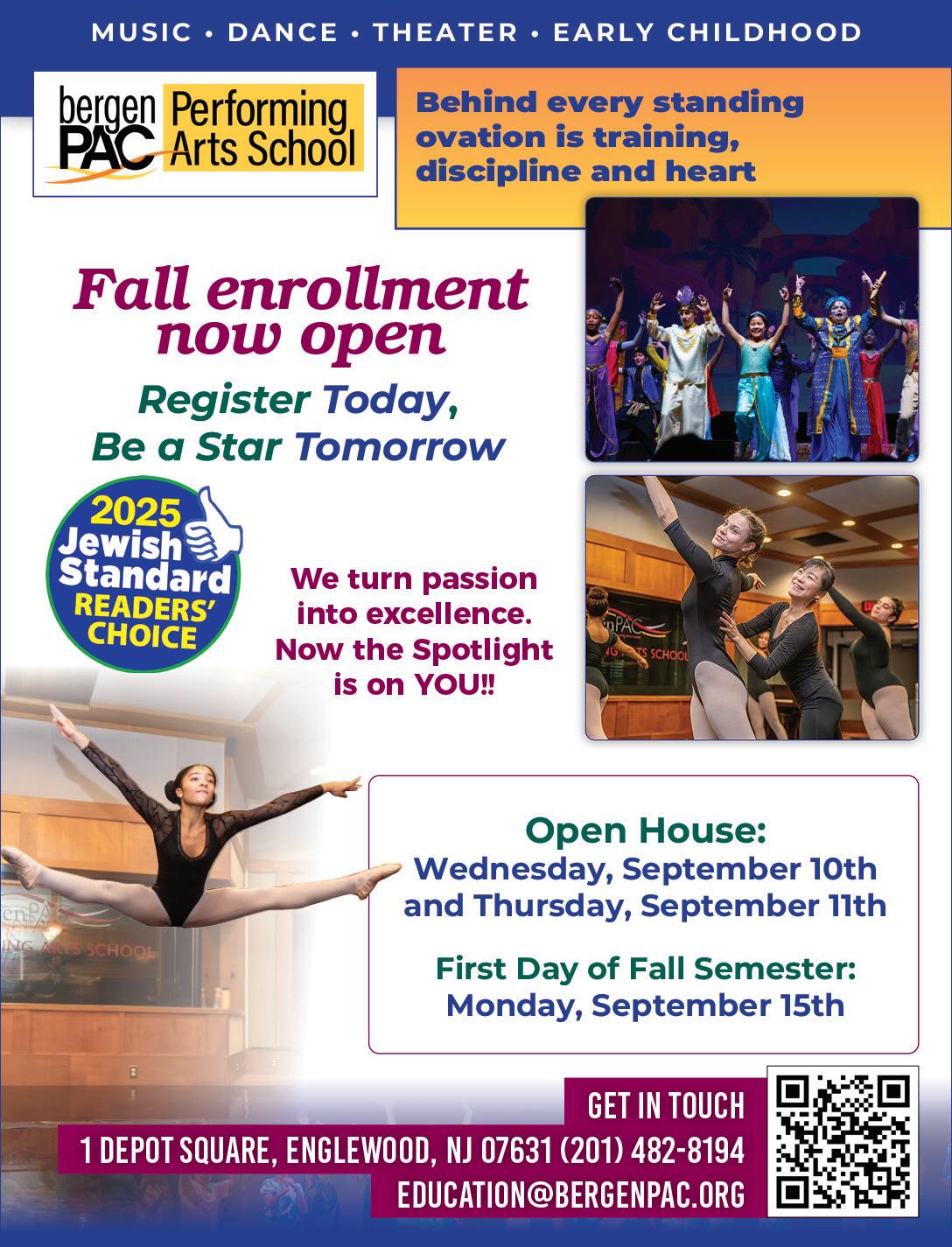

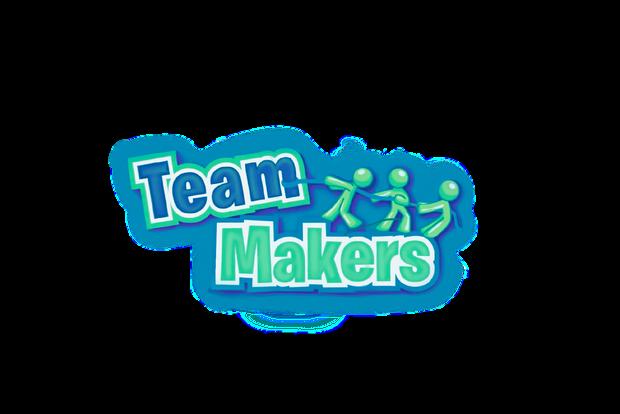


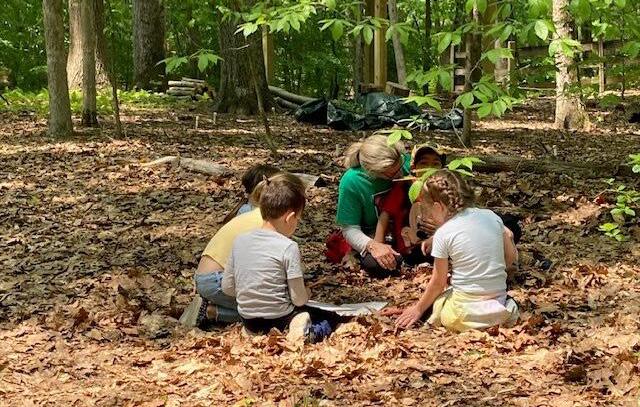



njhalloffame.org/entertainment-learning-center
Express your Jersey pride through a series of interactive exhibits where you’ll learn about New Jersey’s history and heroes. Sing with a hologram of a famous singer on stage, take a journey to the moon, and host an interview on Late Night TV.
NEW JERSEY SEA GRANT CONSORTIUM
Various locations
732-872-1300
njseagrant.org
The Coastal Experience offers a collection of marine science field trips for kids in grades pre-K to 12 based on salt marsh ecology, the Lenape at the Jersey Shore, and barrier beaches.
NEW JERSEY STATE HOUSE
145 W. State St., Trenton 609-847-3150
njstatehousetours.org
Kindergartners to second graders will learn about state symbols, county flags, and the things that make NJ unique. Third through sixth graders will learn about how laws are made, visit the Senate and General Assembly chambers, and explore the building’s art and architecture.
NEW JERSEY STATE MUSEUM
205 W. State St., Trenton
609-292-1382
nj.gov/state/museum
Dive into fascinating pieces of Garden State history like Native American artifacts and dinosaur and shark fossil records. Visit the planetarium or see gigantic-sized toys from years gone by.
NEW YORK HALL OF SCIENCE
47-01 111th St., Corona, NY
718-699-0005
nysci.org
See the inner workings of architecture at CityWorks, learn about ecology in the animated Connected Worlds, see how energy powers our
lives at Powering the City, and learn the science behind bubbles at The Big Bubble Experiment.
OAK HILL FARMS
177 Stillwell Rd., Holmdel
oakhillfarmsnj.com/pages/field-trips
On the first and third Wednesdays of the month, see chickens, alpacas and mini donkeys play right before your eyes during a farm tour, then peek into the beehives and learn about pollinators.
OLD BARRACKS MUSEUM
101 Barrack St., Trenton
609-396-1776
barracks.org
Head to the state’s capital to see where soldiers lived during the Revolutionary War. Go back to 1777 to experience what life was like in Washington’s Army as you “Meet the Past.” Kids will meet Old Barracks interpreters who bring the past to life.
THE PAPER BAG PLAYERS
1120 Avenue of the Americas, NYC 212-353-2332 thepaperbagplayers.org
Field trips are held at theaters in the five boroughs of NYC. This season’s “Hey There, Howdy, Everybody!” is perfect for preschoolers through fourth graders who like storytelling, singalongs and foot-stomping dances.
PATERSON GREAT FALLS
72 McBride Ave., Paterson 973-523-0370
nps.gov
This stunning natural attraction has magnificent waterfalls that you can marvel at while learning the history of Paterson and its industrial renaissance.
PLAY BIG ZONE
300 Campus Dr., Morganville 732-991-1993 playbigzone.com

Super-active kids will have a ball on The Spin Zone Bumper Cars, playing Human Foosball, running inside the Laser Maze, combatting obstacles in The Amazing Race, and competing in the arcade and virtual reality pod.
PLEASE TOUCH MUSEUM
4231 Avenue of the Republic, Philadelphia, PA 215-581-3181
pleasetouchmuseum.org
Forget about, “Look, don’t touch!” Here, kids are required to get hands-on in a GIANT supermarket replica, carousel house, Slinky exhibit, adventure camp, fairytale garden, imagination playground, storytime cabin, rocket room and makerspace.
POPCORN PARK ANIMAL REFUGE
1 Humane Way, Forked River 609-693-1900
ahscares.org/education-programs
At this sanctuary for injured, ill or elderly farm animals, birds and wildlife, kids will see everything from goats to peacocks to bears in one place. Animal Refuge Outreach Programming includes lessons on NJ’s wildlife, alien creatures (aka invasive species) and the life of an animal keeper.
QUEENS COUNTY FARM MUSEUM
73-50 Little Neck Parkway, Queens, NY 718-347-3276
queensfarm.org
The School to Farm Education Programs have a “menu” by season, including farmyard adventures, terrariums as self-sustaining ecosystems, composting, apple cider pressing, farmhouse history and a corn maze adventure.
RAMANESSIN CREEK
Holmdel Park, 44 Longstreet Rd., Holmdel 732-946-9562
co.monmouth.nj.us
Walk the Ramanessin Trail along the brook or the Steeplechase Trail by the site’s old farm routes. You can access Bayonet Farm, as well as an area to collect Cretaceous marine fossils and shark teeth.
THE RAPTOR TRUST
1390 White Bridge Rd., Millington 908-647-2353 • theraptortrust.org
Kids can learn about hawks, eagles, owls and other birds of prey that are being rehabilitated on site. They’ll explore the histories of these species and see them in action while touring the facility.
RARITAN VALLEY COMMUNITY COLLEGE PLANETARIUM
118 Lamington Rd., Branchburg
908-231-8805
raritanval.edu/private-shows-planetarium
Journey through the solar system, ride alongside a star or enter a black hole while inside the planetarium. Sign them up for a scavenger hunt and then treat them to astronaut ice cream after.
REEVES-REED ARBORETUM
165 Hobart Ave., Summit 908-273-8787
reeves-reedarboretum.org
Wander at your own pace through the gardens






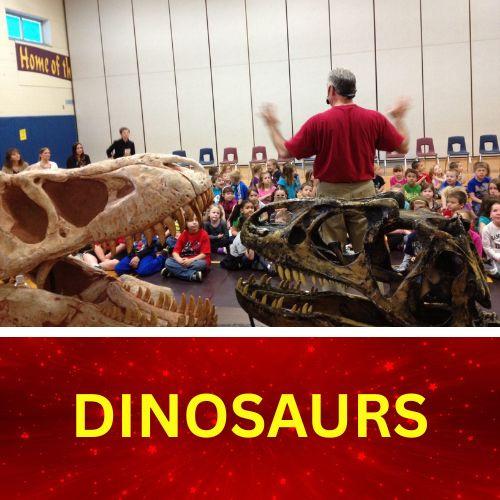


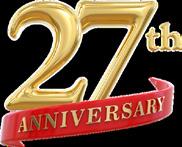




and trails of this pretty 13.5-acre arboretum. Educational topics that are kid-friendly include bugs, food and cooking, seeds and plants, and info on the original Lenape inhabitants of the area.
RISENY
160 W. 45th St., NYC 718-701-4998
riseny.co
Experience New York from a different view: Fly 30 feet above ground on a flight simulation ride as you soar over the Big Apple, sit down for an immersive film about the New York subway, and explore seven interactive exhibits at the museum.
RUTGERS GEOLOGY MUSEUM
85 Somerset St., New Brunswick 848-932-7243
geologymuseum.rutgers.edu
Take a guided tour to learn about dinosaurs, geology, the Ice Age and mummies, with special attention given to NJ-based exhibits.
SCHIFF NATURE PRESERVE
339 Pleasant Valley Rd., Mendham 973-543-6004
schiffnaturepreserve.org
Dubbed the place “where wild things happen naturally,” Schiff is home to 12 miles of trails and 768 acres of protected land. Don’t miss the Great Meadow and plant garden with native species.
SEA LIFE NEW JERSEY
1 American Dream Way, East Rutherford 551-234-6382
visitsealife.com/new-jersey
Kids will come face-to-face with 3,000 different exotic aquatic creatures in more than 20 marine exhibits - and get closer to some, thanks to the Touchpool. There are also educational workshops covering subjects like habitats and animal behavior.
SOLOMON R. GUGGENHEIM MUSEUM
1071 Fifth Ave., NYC
THE RED MILL MUSEUM VILLAGE 56 Main St., Clinton 908-735-4101 • theredmill.org
STEAM-focused tours give kids a glimpse into what life was like in the 1800s and early 1900s through visits to the schoolhouse, mill and quarry. Or, they’ll learn about colonial life in the 1700s with a trip to the log cabin, herb garden and springhouse. Each tour includes hands-on activities and demos.

STERLING HILL MINING MUSEUM
30 Plant St., Ogdensburg 973-209-7212
sterlinghillminingmuseum.org
For an underground experience, tour the Zobel Hall Museum, the mine and the Warren Museum of Fluorescence. Sluicing is a good option for kids, since they can sift sand for minerals and fossils through the water trough.
212-423-3500
guggenheim.org
In case the museum’s incredible collections of Impressionist, Post-Impressionist and modern French masterpieces aren’t enough incentive to visit, the building itself is one of eight Frank Lloyd Wright designs designated as a UNESCO World Heritage Site.
SOUTH STREET SEAPORT MUSEUM
12 Fulton St., NYC
212-748-8600
southstreetseaportmuseum.org
This museum offers tours of historic buildings and ships and interactive learning activities. Kids will ride a tugboat or schooner after learning about the 19th-century port of New York.
SPACE FARMS ZOO & MUSEUM
218 County Road 519, Sussex 973-875-3223
spacefarms.com
Spread throughout 11 buildings dedicated to showcasing American history, you can see 50+ antique cars and motorcycles, a series of dolls, a hand-built train set, a mini circus, and 500 live wild animals.
STATE THEATRE NEW JERSEY 15 Livingston Ave., New Brunswick 732-246-7469
stnj.org
Check out the schedule of shows and concerts; or opt for the Symphony Scholars program that teaches kids about classic music, then lets them experience a live orchestra concert.
STATUE OF LIBERTY Liberty Island, NYC 212-363-3200
nps.gov/stli
At this crossroads to America, climb the pedestal to access Lady Liberty’s crown, stop by the Statue of Liberty Museum and theater, then
head to the National Museum of Immigration on Ellis Island.
STORM KING ART CENTER
1 Museum Rd., New Windsor, NY
845-534-3115
stormking.org
Kids will marvel at the large-scale works of art and on-site commissions at this 500-acre outdoor museum located in NY’s Hudson Valley.
TEAM MAKERSNJ
400 Tenafly Rd., Tenafly 201-500-8076
teammakersnorthjersey.com
Kids are divided into teams so they can work on team building, engineering, skill games, and experiments at different stations. Interactive STEM-style assemblies called the Spirit Challenge encourage respect, leadership and team spirit through comfort zones and play.
TENAFLY NATURE CENTER
313 Hudson Ave., Tenafly 201-568-6093
tenaflynaturecenter.org
Spend time along the Bellflower Faerie, bird or storywalk trails; or bring animal lovers to see frogs, salamanders and birds of prey. Kids can go geocaching, backpacking, letterboxing and wildlife watching on the grounds.
THOMAS EDISON NATIONAL HISTORICAL PARK
211 Main St., West Orange 973-736-0550, ext. 11 nps.gov
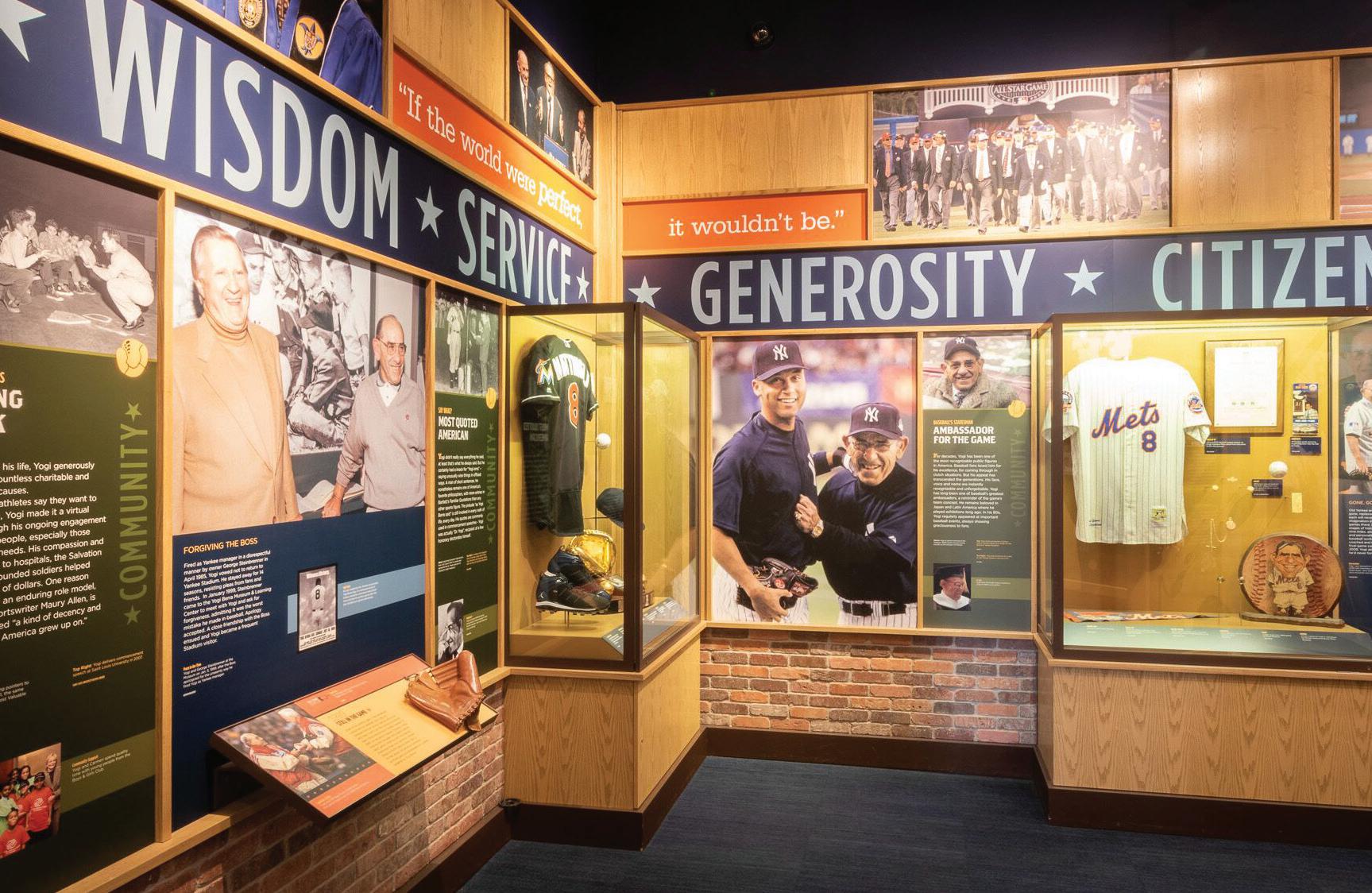
Your kids may know Thomas Edison invented the lightbulb, but what about his other works? Here, they can explore his chemistry lab and tour the Black Maria, Edison’s first film studio.
TiLT MUSEUM
1 American Dream Way, East Rutherford 833-263-7326
americandream.com/venue/tilt
Become one with the art at TiLT, which offers an immersive art experience and optical illusions designed by award-winning artist Tracy Lee Stum.
TOPGOLF
104 Centerton Rd., Mt. Laurel; 856-793-4086
1013 Rte. 1, Edison; 732-374-4097
topgolf.com/us/plan-an-event/field-trips
The new field trip package at this indoor driving range includes golf play, swing tips and a science lab curriculum, plus snacks and goodie bags.
TWO RIVER THEATER
21 Bridge Ave., Red Bank 732-345-1400

VALLEY SHEPHERD CREAMERY
50 Fairmount Rd., Long Valley 908-876-3200 valleyshepherd.com
During a guided farm tour, kids can see lambs and sheep, and then take a wagon ride up the mountain to learn about the cheesemaking process.
YOGI BERRA MUSEUM & LEARNING CENTER
Montclair State University, 8 Yogi Berra Dr., Little Falls 973-655-2378 • yogiberramuseum.org
This museum is dedicated to the New York Yankees legend, but also has exhibits on Negro Leagues Baseball, New York City’s Golden Boys, vintage catcher’s mitts, COVID’s impact on the sport, plus an interactive pitching mound. Visit on September 21 to be part of a Guinness World Record attempt for the largest game of catch.
tworivertheater.org
Arts education supports the artist in each student and builds future audiences. There are student matinees for kids, or lessons on social justice for teen learners.
TURTLE BACK ZOO
560 Northfield Ave., West Orange 973-731-5800
turtlebackzoo.com
Take a behind-the-scenes tour or get up close with giraffes, sea lions, sea turtles, penguins and butterflies. Other attractions include mini golf, the Children’s Regatta Playground, paddle boats and the Essex County TreeTop Adventure Course.
THE WILDLIFE CONSERVATION AND EDUCATION CENTER
303 Midland Ave., Garfield 201-257-2231
thebatcave.org
New Jersey’s “bat cave” introduces kids to the importance of bats to the ecosystem. They’ll watch presentations on reptiles and rainforest critters, plus see other animals front and center.
ZIMMERLI ART MUSEUM
71 Hamilton St. New Brunswick 848-932-7237
zimmerli.rutgers.edu
See thousands of pieces of art across several mediums, create stories inspired by portraits, and go on interactive educator-led discovery tours.
Tips to stand out in the application process
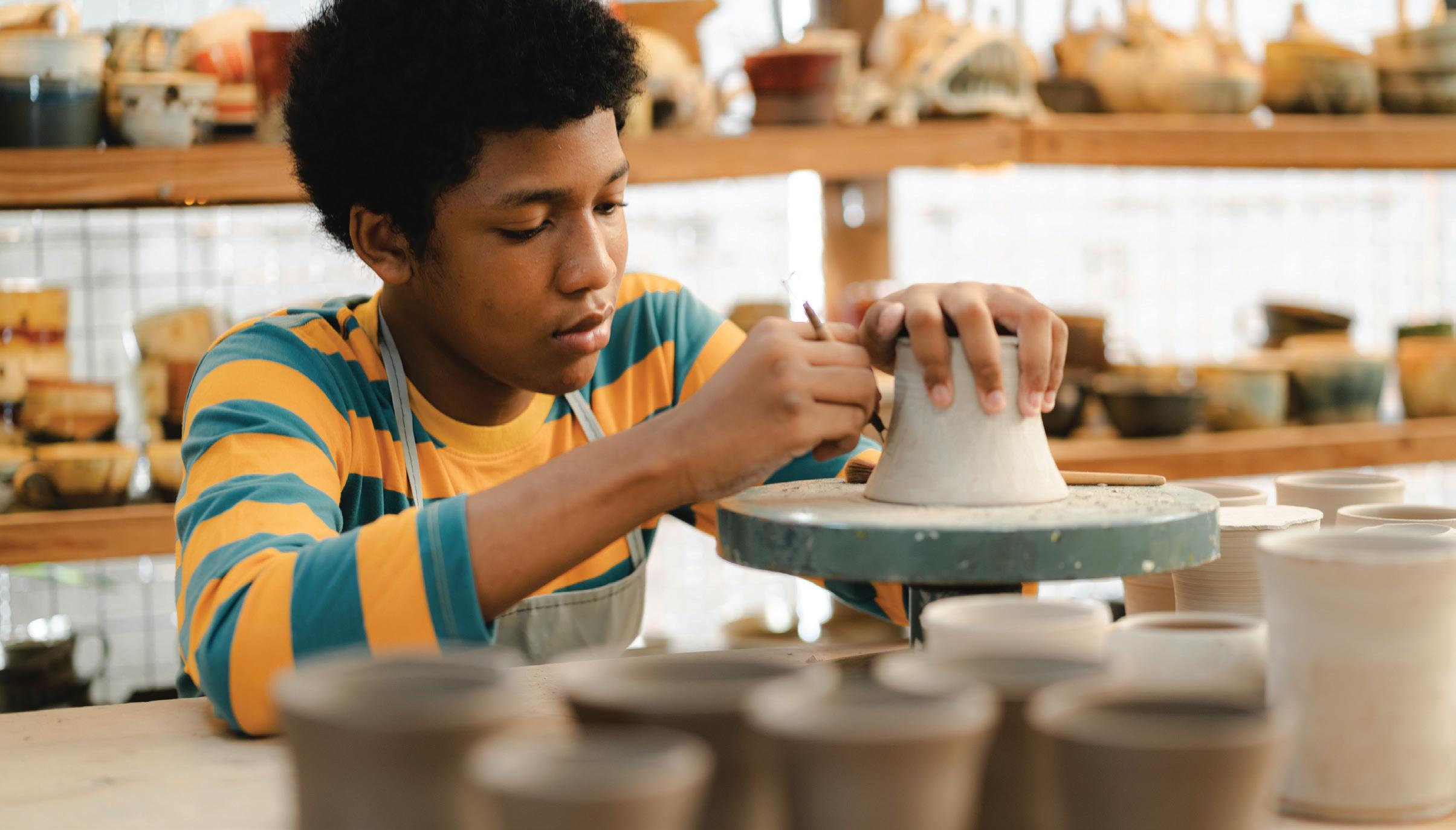
By DINA EL NABLI
In a sea of college applicants, how can students set themselves apart? Experts agree it starts by following their natural interests. Here’s some advice:
9TH GRADE: TRY
The first year of high school should be about exploring what genuinely interests a student, without worrying about how activities will look to colleges. “The most compelling college applications come from students who’ve spent high school pursuing genuine interests— not just building a resume,” says Dr. Rachel Rubin, founder and CEO of Spark Admissions in Brookline, MA.
“Too many students think they have to play a sport or volunteer to impress colleges,” says Laurie Kopp Weingarten, president of One-Stop College Counseling in Morganville. “In reality, the most meaningful activities are the ones that truly interest them—the ones they’ll stay up at night thinking about.”
The takeaway: Ninth graders should join activities they’re drawn to. The goal at this stage is curiosity and personal enjoyment, not resumebuilding.
10TH GRADE: FIND A FOCUS
Sophomore year is a good time to begin narrowing interests with depth and initiative. That could mean launching a small project, taking on leadership in a community space they care about, or doing research about something that matters to them, says Rod Lembvem, IvyWise College Admissions counselor and former associate director of admissions at Case Western Reserve University. “The sooner students take ownership of their path, the more naturally their application will reflect who they truly are.”
John Morganelli, former director of admissions at Cornell University and now director of college admissions at Ivy Tutors Network, recommends that students explore how to channel their
academic interests within their school or community. For example, a student interested in sustainability might research local composting policies and write about their findings.
The takeaway: Sophomores should consider choosing a meaningful issue to research or write about on their own.
The summer before junior year is prime time to focus on SAT or ACT test prep. “Plan test dates so the test can be taken at least twice before the start of senior year,” says Jason Stern of Mr. Admissions.
“Whether it’s hiring a tutor, self-study, or using a free online prep class, plan to devote a few hours each week to test prep.”
Junior year is also the time to demonstrate a deeper commitment to a passion. Morganelli suggests setting a goal of publishing or submitting a piece of writing to a school or community newspaper.
“Public-facing deliverables equal narrative credibility,” he says, adding that students who take initiative beyond the classroom naturally distinguish themselves.
The takeaway: Juniors should prep for the SAT or ACT, and aim to write and publish something related to their interests.
Starting to work on applications the summer before senior year can reduce stress, says Tom Jaworski, founder of Quest College Consulting. “Use the summer to complete multiple items…including the essay, student section of the Common Application, and narrowing the college list.” Reflection over perfection should be the guiding principle when writing a college essay. “The most powerful tool…is the ability to reflect on the journey and communicate it with clarity and purpose,” says Lembvem.
The takeaway: Seniors should focus on authentic personal growth in their college essays.







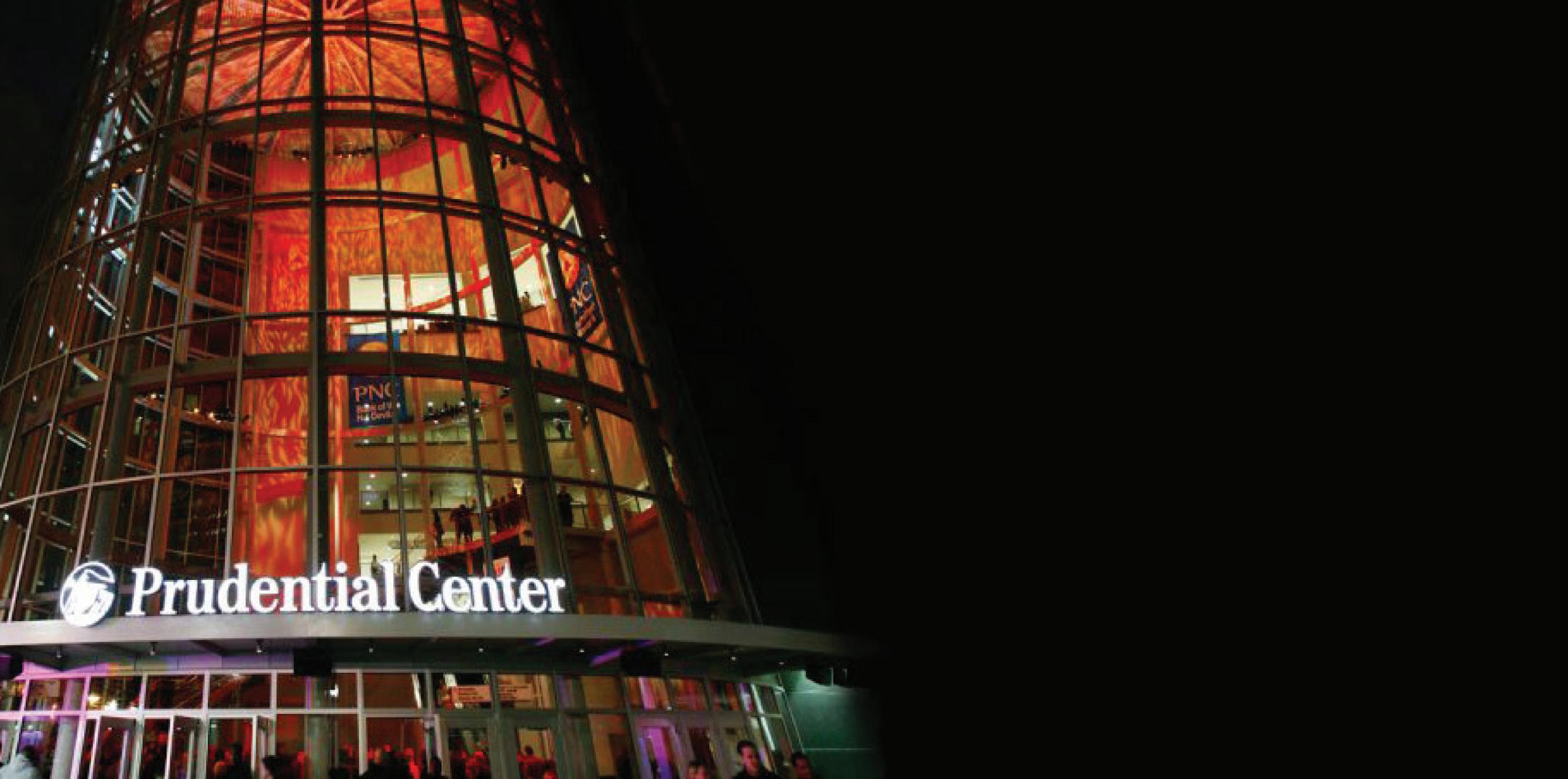


Symphony of Seasons Sat, Oct 4 @ 3 & 8PM
Hear your favorite music from the video game Stardew Valley performed by a 35-piece orchestra in Symphony of Seasons. stardew valley

Oct 23 @ 8PM
The Vampire Circus features acrobats, aerialists, contortionists, jugglers, illusionists and clowns — with a dark twist.

Oct 16 @ 8PM

“Come on Down!” You could be the next contestant on The Price Is Right Live™ and win cash, prizes or a brand-new car.

The State Ballet Theatre of Ukraine Sat, Oct 25 @ 3PM
The State Ballet Theatre of Ukraine returns to NJPAC with Sleeping Beauty, a bright and colorful ballet for all ages.
One for the Ages Tour Sat, Oct 18 @ 7PM

Experience the impossible right before your eyes with Justin Willman, the hilarious star of Netflix’s Magic for Humans.

the rock orchestra by candlelight
Sat, Nov 29 @ 8PM
Rock and metal songs are transformed by the classically trained musicians of The Rock Orchestra by Candlelight